

African Savanna Animals
18 iconic animals of the savanna to spot on safari.
What sort of savanna animals can you expect to see on a safari game drive ? Read on below for our take on most iconic animals of the savanna.
Africa is home to many different habitats – wetlands, deserts, mountains, jungles and many more – but it is on Africa’s savannas that the most impressive numbers and selections of wildlife can be found.
What is a savanna?
Savanna is defined as dry regions receiving less than 30 centimeters of precipitation annually, and are formed when regional climate changes result in long-lasting drought conditions.
Savannas have year-round warm temperatures and two distinct seasons. These are:
- A very long dry season (winter) that typically starts with a series of violent thunderstorms followed by strong dry winds.
- A very wet season (summer) where a significant amount of rainfall occurs for just a few months each year. In the Southern Hemisphere this rainy season is typically October to March, and in the Northern Hemisphere April to September.
In particular, East Africa’s grasslands making up the Serengeti and Masai Mara ecosystem is considered the largest savanna on Earth, and home to literally millions of grazers ( wildebeest , zebra , and gazelle ), and the many thousands of predators that hunt them. To go on safari in East Africa’s savanna is about as authentic it gets for a traditional safari experience with multiple regular wildlife sightings guaranteed.
With this in mind, let’s look at 15 of the most iconic savanna animals in Africa:

Juvenile aardvark
Aardvarks live throughout Africa, south of the Sahara. Their name comes from South Africa’s Afrikaans language and means ‘earth pig’. Being nocturnal, they spend the hot African afternoons resting in their cool underground burrows, and nighttimes foraging in grasslands and forests for termites.
African bush elephant

Elephant close up
The African elephant ( Loxodonta africana ) is the largest and heaviest land animal in the world, weighing up to 6 tonnes. Their distinguishing features include the unique and dexterous elephant trunk , large ears that cool the body when flapped, and elongated incisors in the form of tusks. There are actually two species of African elephant – the African bush elephant and the smaller African forest elephant. Both are herbivores that live in large groups, whilst the African bush elephant is the larger of the two species, and typically the species referred to as a member of the big five animals.
A bull elephant can be dangerous, as can herds or mothers with young elephants. Keep your distance from them, and if in a vehicle ensure that you have the means to drive away forwards – elephants can run faster than a car can reverse. An elephant flapping its ears, kicking up dust and/or trumpeting is probably about to charge.
Group name: Herd
Size: Up to 3.3 meters tall, weighing 6,000kg.
Speed: Up to 40 km per hour.
Diet: Elephants are vegetarians, eating up to 160kg per day, made up of savannah grasses, bushes, small plants, fruit, twigs, tree bark, and roots.
Range & Habitat: African Elephants are found across sub-Saharan Africa – from Mali in the north, through the central and west African forests, down to South Africa. They are adaptable animals, capable of surviving in many habitats, from lush wetlands to arid deserts.
Best places to see African Elephant: Addo Elephant Park, South Africa, Chobe National Park , Botswana , Etosha National Park, Namibia , Hwange National Park, Zimbabwe , South Luangwa National Park, Zambia.

Caracal stalking
Caracal (meaning ‘black ears’ in Turkish) are common across Africa, and also native to the Middle East, and parts of Asia and India. They are characterized by their stocky body on long legs, tufted ears, and uniform sandy colour. At 0.5 meters tall they weigh in at just 12 kg, and spectacular acrobats, able to leap 3 m into the air.

Cheetah walking in the sunset
Group name: Coalition.
Size: 0.9 metres, weighing up to 72kg.
Speed: With a maximum speed of 92 kilometers per hour, the cheetah is the fastest land animal in the world .
Diet: Cheetahs hunt small and medium-sized mammals such as hares, impalas, wildebeest calves, and gazelles , either on their own or in small family groups.
Range & Habitat: Cheetahs are found in Eastern and Southern Africa (though are also found in Iran and Afghanistan), generally confined to very small, fragmented habitats of savanna, dry and scrub forests and grasslands.
Best places to see cheetahs: Etosha National Park , Namibia , Kruger National Park, South Africa , Masai Mara National Reserve, Kenya .

The eland is one of the African savanna’s most enduring savanna animals. The largest of the antelope family, the animal is remarkable for its striking coat and impressive, ox-like build. Elands make a peculiar clicking sound that can be heard from a mile away, the source of which is a subject of some debate. Some believe it’s produced by the eland’s legs, with others believing it’s the eland’s spiral hooves that make the sound.
Where to see eland: The eland thrives in the game parks of Kenya , Tanzania , Zambia, Botswana , Zimbabwe, and South Africa .

Giraffe mother with two young on the savanna
Perhaps the ultimate icon of the African savanna, the giraffe is an unmistakable land mammal known for its long neck and spotted coat. They were known by Arab prophets as the ‘queen of the beasts’ because of their delicate features and graceful poise.
With nine subspecies sharing its distinctive characteristics, this safari animal is the tallest in the world by some way. The giraffe’s coat is characterised by dark blotches on lighter hair. With age, male giraffes may become darker, and while calves inherit spot patterns from their mothers, each giraffe has a unique coat pattern that sets it apart. It has a sharp sense of hearing and smell, another defense against predators, while it can close its nostrils during sandstorms and against ants.
Best places to see giraffe: Etosha National Park in Namibia , Kruger National Park in South Africa , Serengeti National Park in Tanzania , Masai Mara National Reserve in Kenya .
Grant’s zebra

Zebras drinking on the savanna
Zebras are perhaps the most stylish of Africa’s stars, with their characteristically stunning coats of black and white stripes. These distant relatives of the horse are a frequent sight on any African safari and consist of three different species.
There are many theories about why zebras are striped , and it seems that perhaps the most likely answer is that the stripes function as a way to deter biting insects like tsetse flies and mosquitos.
Plains zebras play a particularly interesting role in the ecosystem, as they are pioneer gazers, nibbling and feeding on the top-most layer of grass, thereby opening up the grassland for more specialized grazers looking for the short grasses tucked below.
Best places to see zebra: Etosha National Park, Namibia, Makgadikgadi Pans in Botswana, Masai Mara in Kenya, Okavango Delta in Botswana, Samara Game Reserve in South Africa, Samburu National Reserve in Kenya, Serengeti National Park in Tanzania

The hartebeest, is a large African antelope, also known as a kongoni. With a camouflaged fawn-colour, their most distinctive characteristics are an elongated snout and steeply sloping back. Despite their strange looks, the hartebeest is one of the fastest animals on the savanna, reaching speeds of close to 70 kilometers per hour.
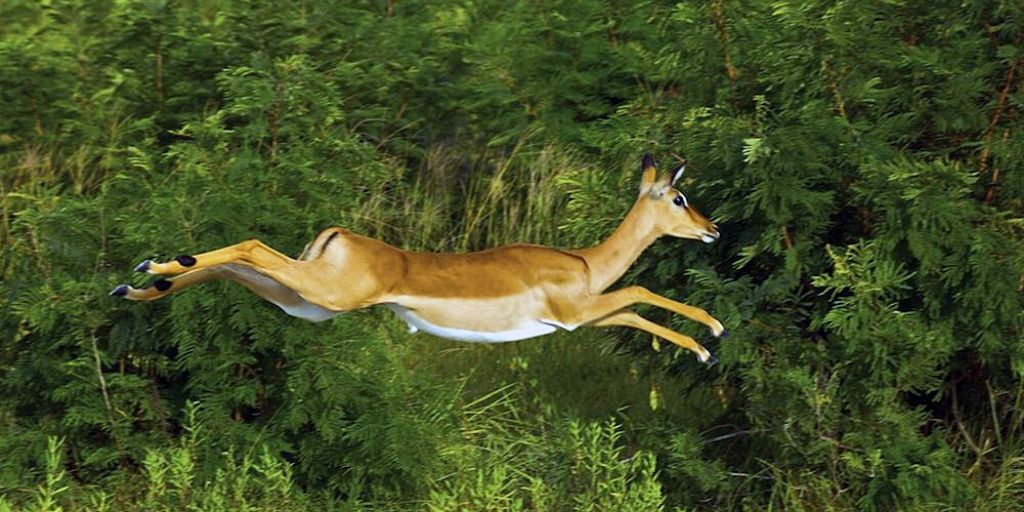
Impala jumping in lush green bushes
The impala is an animal that you shouldn’t have too much trouble spotting during your safari. The impala has a lovely red coat matched against a white underbelly, which might seem reminiscent of the springbuck, except not as dramatic a contrast between the two.
The impala is sexually dimorphic, which means that the males and females don’t look alike. Where males have horns, the females don’t, and it’s with these lyre-shaped horns that the males fight off their opponents and rivals. The curved arch means the horns become interlocked during a skirmish, potentially saving the male impala from skull damage or serious wounds.

Golden jackal standing in green grass
The jackal is a relatively small canid that is found predominantly in Africa, with some species residing in Southeastern Europe and Asia. The African jackal is known as “Mbweha” in Swahili.
At first glance, the jackal looks like a cross between a fox and a German shepherd dog. This is because it has a small face, delicate legs, fluffy tail, and ears that resemble those of a German shepherd.

Leopard lying on a tree branch
Group name: Leap.
Size: 1 meter high, weighing up to 100 kg.
Speed: 56 km per hour.
Diet: Leopards are opportunistic carnivores and hunt a wide range of prey such as jackals , antelopes, gazelles, African monkeys , duiker, eland, impala , wildebeest and more.
Range & Habitat: Leopards live in more places than any other big cat, and are comfortable in almost any habitat, including deserts, rainforests, woodlands, grassland savannas, mountain, scrub, and swamps. Leopards are one of the few big game species found outside national parks.
Best places to see leopards: Londolozi Game Reserve, South Africa , Moremi Game Reserve , Botswana , Samburu National Reserve, Kenya , South Luangwa National Park, Zambia.

Lioness scouts for prey on the savanna
Group name: Pride.
Size: 1.2 meters, weighing up to 225kg.
Speed: At a maximum speed of 80 kilometers per hour, the lion is the second fastest land animal in Africa.
Diet: Lions are apex predators and generally hunt the larger animals in their surroundings – buffaloes, rhinos, zebras, giraffes , and antelopes.
Range & Habitat: Lions tend to prefer grassland, savanna, dense scrub, and open woodland. They are found across sub-Saharan Africa, and also in a small part of north-east India.
Best places to see Lion: Kgalagadi Transfrontier Park, South Africa , Kruger National Park, South Africa , Maasai Mara National Reserve, Kenya , Ngorongoro Conservation Area, Tanzania , Okavango Delta, Botswana .

World’s largest bird, the ostrich
The common ostrich is the tallest and heaviest bird in the world, with an average height of over 2 meters (sometimes as tall as 2.7 meters) and a weight of up to 160 kg. At this size, the ostrich is, of course, a flightless bird , but can outrun plenty of animals with its top speed of 69 km per hour. Their long, powerful legs double up as defensive weapons which pack a powerful kick to would-be predators. Fun ostrich fact – they are able to survive without water for days, generating water internally and extracting water from vegetation.
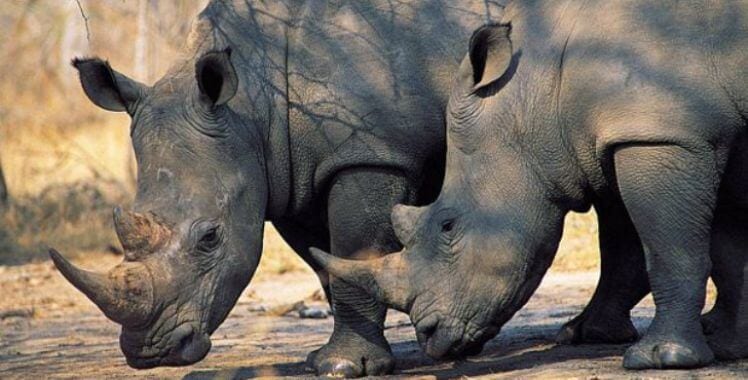
Two southern white rhinos
Rhinos are something you just need to see to understand how impressive they really are. A rhino sighting is always special and as you look in awe your heart will definitely skip a beat.
Once widespread through sub-Saharan Africa, the rhino has been hunted to the brink of extinction and is probably the hardest of the big five to spot in the wild. There are two species of rhinoceros in Africa – the black rhino ( Diceros bicornis ) and the white rhino ( Ceratotherium simum ).
Whilst white rhinos have made a comeback through conservation efforts across the continent, black rhinos are still very much one of Africa’s endangered animals , and the hardest safari animal to spot. The fundamental differences between the white and black rhino are not color, but rather size, temperament, food preference, and mouth shape.
Best places to see Rhinoceros: Etosha National Park , Namibia ,Hluhluwe–Imfolozi Park, South Africa , Lewa Wildlife Conservancy, Kenya , Mkomazi National Park, Tanzania.
Spotted hyena
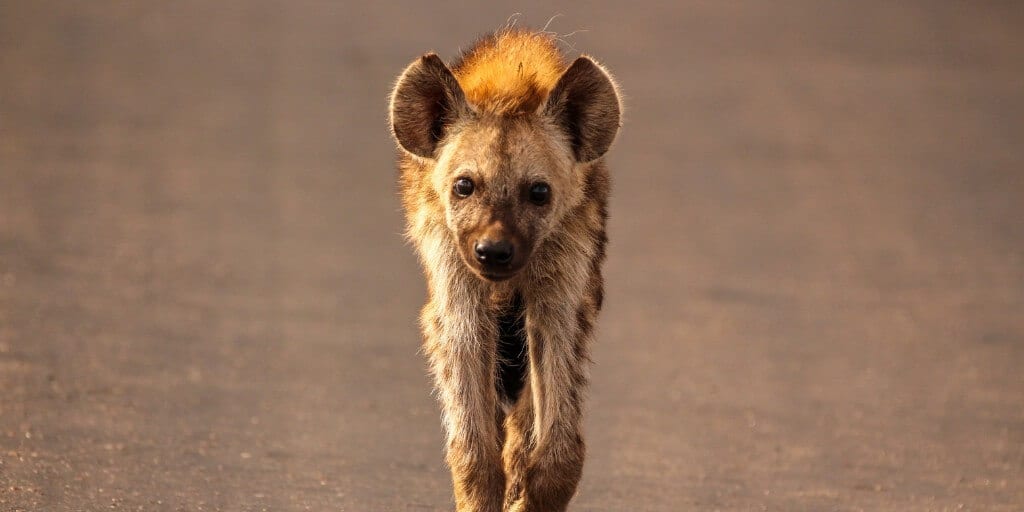
A hyena cub close up
Hyenas are unique and vital components of most African ecosystems, both taking advantage of other animals’ kills for easy meals and hunting themselves. The size of a hyena kill or scavenge is generally determined by the size of the hyena’s clan, which can run to dozens. They often hide extra food in watering holes, since nothing is wasted. Hyenas will eat every part of an animal, including bones and hooves.
Hyenas can adapt to almost any habitat and are found in grasslands, woodlands, savannas, forest edges, sub-deserts, and mountains.

Warthog walking in long savanna grass
Warthogs are normally found in family groups, where they spend most of their time either looking for food or wallowing in the mud at waterholes. At night they shelter in burrows, entering tail first.
Warthogs have a wide distribution across sub-Saharan Africa, with a preference for open woodland and savannahs, and are not endangered.
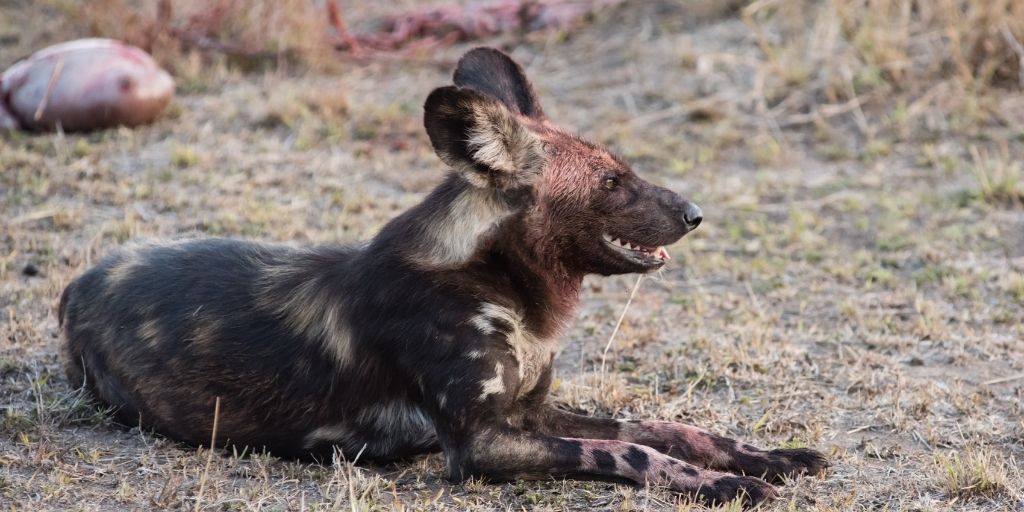
Wild dog with a bloody face
African wild dogs live in packs of around 6-20 and are highly intelligent and sociable. One of the most fascinating sights is the bond they display before a hunt; the group begins mingling within the group, vocalising and touching each other, working each other up into a frenzy of excitement. Sadly, these animals are highly endangered
Best places to see wild dogs: Hluhluwe-Imfolozi Game Reserve in South Africa, Hwange National Park in Zimbabwe, Kruger National Park in South Africa, Niassa National Reserve in Mozambique, Kwando, Selinda & Linyanti in Botswana, Tswalu Private Wildlife Reserve in South Africa.

Huge herd of wildebeest meandering through the long yellow grass plains in Tanzania’s Serengeti
Wildebeest are primarily grazers, enjoying the grass, and the occasional shrub and herbs, living in herds of between ten and many thousands. They’re characterized by a long black mane and a beard of hair hanging from the throat and neck, along with their short curved horns, with males weighing up to 250kg.
Their preferred habitat is open grasslands, with their renowned seasonal migration being an optimized survival strategy giving them access to and use of resources over huge areas, minimizing over-grazing during both wet and dry seasons.
African savanna animals list
Above we’ve looked at the most iconic African animals found on the savanna, but there are plenty more we didn’t cover. So here’s a complete list of savanna animals found in Africa:
Savanna birds
African hoopoe African masked weaver Flamingo Lilac breasted roller Marabou stork Ostrich Red and yellow barbet Red-billed oxpecker Secretary bird Southern ground hornbill White-backed vulture
Savana canids
African wild dog Hyena Jackal
Savanna cats
Caracal Cheetah Leopard Lion
Savanna reptiles
Adder African helmeted turtle African rock python Black mamba Common egg-eater Flap-necked chameleon Gecko Leopard tortoise Meller’s chameleon Natal midlands dwarf chameleon Nile crocodile Rock monitor lizard Skink Southern brown snake
Savanna ungulates
Blesbok Bontebok Common duiker Eland Gazelle Giraffe Grant’s Zebra Hartebeest Impala Roan antelope Springbok Stenbok Wildebeest
Other savanna mammals
Aardvark African elephant Chacma baboon Honey badger Meerkat Mongoose Rhinocerous Warthog
That’s our round-up of African animals of the savanna. What did you think – have you seen any of these animals in the wild, or perhaps there’s an iconic savanna animal you feel we’ve left off this list? Let us know your thoughts in the comments section below!
Thank you. I used this information to make an animal play scene for my students.
Top countries for safaris
- Botswana safaris
- Kenya safaris
- Namibia safaris
- South Africa safaris
- Tanzania safaris
- Uganda safaris
Safari basics
- Safari animals
- How to find the right safari company
- When to go on safari
- What to take on safari
- Safari clothing – what to wear
- Safari rules & etiquette
- Wildlife spotting tips
Most read articles
- All about the ‘big five’ animals
- Collective nouns for animals
- Safari movies to watch before you go
- The world’s fastest land animals
- Apex predators
- 10 Fascinating African tribes
- The biggest animals in the world
- 17 Epic hybrid animals
- The world’s ugliest animals
- Why are flamingos pink?
Africa’s best game reserves
- Chobe National Park, Botswana
- Etosha National Park, Namibia
- Kruger National Park, South Africa
- Masai Mara National Reserve, Kenya
- Moremi Game Reserve, Botswana
- Okavango Delta, Botswana
- Serengeti National Park, Tanzania
Session expired
Please log in again. The login page will open in a new tab. After logging in you can close it and return to this page.

Book With Leading Tours While Protecting Habitat
- Amazon Rainforest
- Galapagos Islands
- Puerto Maldonado
- South Africa
- Tours & Lodges
- Cruises in the Tropics

Hi, I'm Ash, your tour advisor. I hope you find this post helpful. If you want my help deciding on an experience, send me an message .
Top 9 African Savanna Tours

The famous grasslands of Africa have appeared on every nature lover’s television or computer at some stage or another. The endless golden grass swaying in the breeze breached only by the dark eyes of a predatory stalking cat is one of the most famous predator-prey images we have.
Mirroring this, African savanna tours are one of the world’s most memorable wildlife experiences. To see lions laying in the shade or hunting prey, elephants foraging for food, or giraffes blocking your jeep for a photo or two offers not just a vacation, but a lifetime of memories.
Here, we present a selection of a few top African Savanna tours to help you make the most of this amazing ecosystem. To focus on South Africa, you can see the top 5 savanna tours in South Africa .

With abundant wildlife, beautiful scenery and some of the world’s best lodges, what better place to spend your free time. The savanna crosses many African countries and some of the most loved places for your savanna safari include South Africa, Kenya and Tanzania.
So let’s go TourTheTropics of the most famous tropical grasslands.

South Africa’s Savanna
Covering almost half of the country, many tourists visit South Africa to see the famous African savanna. This is South Africa’s oldest conserved habitat and was protected 100 years ago by the famous Kruger National Park, which is home to the Big 5 African animals and many others. Here you will find elephants, rhinos, lions, cheetah, giraffes, hippopotamus, zebra and a fantastic diversity of birds and other animals.

Kruger is a very large protected area covering almost 2 million hectares. This is where you can find large concentrations of famous animals. To put its wildlife into perspective, the park contains around 10,000 blue-wildebeest, 9,000 kudu, 100,000 impala, 25,000 zebra, which support around 200 cheetah and 1,500 lions, and of course many more species live within these boundaries.
And there are some fantastic lodges for the Greater Kruger National Park . This Greater Kruger National Park includes the surrounding reserves in continuous, unfenced savanna habitat. And the surrounding reserves are often the best choice for your safari.
Of the entire Greater Kruger National Park, the most wildlife-rich area for the best safari is named the Sabi Sand Game Reserve or simply the Sabi Sands for short. And there are some fantastic Sabi Sands safari lodges to enjoy for an exciting Big 5 safari.

This region has one of the highest concentrations of large mammals of any game reserve in Africa. And it’s a fantastic choice to make the most of your safari. Being home to all of the Big 5, the region is particularly famous for leopard sightings, which you can see in the images on this page.
And our recommendations to make the most of this region are the luxury-class experience of the Dulini Moya or Dulini River Lodge. The Dulini Moya Lodge offers a traditional safari feel with luxurious decor. And the lodge is proud of its dining experience and selection of South African wines to complement your safari.
For a more immersive experience of the region, the Dulini Moya also offers you exciting bush walks led by professional rangers (featured in the header image).
You’re also welcome to combine this with the Dulini River Lodge offering a similar experience a little closer to the Sand River itself.
Check availability for your travel dates direct to the Dulini Moya using the tour bubble below.

The Dulini Moya Lodge
Positioned in the world renowned Sabi Sand Nature Reserve, the Dulini Moya Lodge offers you the romance and sense of ...
Includes: all meals, accommodation, two daily game drives, house wines, local brand spirits, beers, soft drinks, refreshments on game drive, bush walks, transfers from the lodge airstrip (Ulusaba) | 3, 4, 5 days+

The Dulini River Lodge
Experience luxury in the heart of South Africa’s most wildlife-rich region with a safari from Dulini River Lodge. Perched over ...
As another option, offering a little less luxury and elegance, but still providing a comfortable lodge with fantastic guides, trackers and wildlife is the Inyati Game Lodge .
This is found in a similar area to the Dulini Moya above. And the lodge makes a great option for a family safari of the Sabi Sands.

The Inyati Game Lodge
Experience an unforgettable African safari at Inyati Game Lodge. Nestled in the western section of Sabi Sand Nature Reserve, enjoy ...
Includes: all meals, accommodation, two daily game drives, house wines, local brand spirits, beers, soft drinks, refreshments on game drive, walking safaris, transfers from the lodge airstrip (Ulusaba) | 3, 4, 5 days+
Shamwari Reserve
Shamwari Reserve conserves a fantastic area of South Africa’s savanna that you can experience from luxury camps like the Bayethe Lodge or walking tours from Shamwari Camp. To help see the differences compared to Kruger above, we have written a guide to Shamwari Reserve and Kruger National Park . From the explorer camp, you will enjoy an original and traditional safari by walking across the savanna and staying in a traditional safari camp. From your base, you will head out to find savanna wildlife, including some Big 5 encounters. Your guide will talk about the birds, cultural history and wildlife around you. To explore the area, there are also some fantastic luxury lodges for the Shamwari Game Reserve .

The Bayethe Tented Lodge
Currently, TourTheTropics.com cannot help you book this experience. However, you can visit the tour operator's website for more information.

The Riverdene Family Lodge

The Eagles Crag Lodge

The Lobengula Lodge
Sanbona reserve.
Considered the best wildlife destination on the western cape, Sanbona Wildlife Reserve is located at the base of the Warmwaterberg Mountain Range and pays tribute to the San people who roamed this arid land for centuries. One of South Africa’s largest privately owned game reserves, Sanbona covers 54,000 hectares where you can find fantastic ancient rock art of the San, and learn about these highly skilled and knowledgeable bushmen. On walking safaris from the Sanbona Explorer Camp, your guide will teach you about the area, its cultural history and help you experience wildlife of the reserve, including the Sanbona’s White Lions.
The Sanbona Explorer Camp
Uganda savanna.
You can enjoy Ugandan savanna and its wildlife by visiting the Mihingo Lodge. Here you don’t even need to go on their guided tours to see the wildlife. You can relax in the Mihingo’s pool gazing out at the waterhole to see many different savanna animals, including waterbuck, topi, buffalo, hippo, duiker, and bushbuck. The water hole is also frequented by crocodiles, oribi, reedbuck, and leopards.
Tanzania Savanna
Tanzania is probably better known for the Serengeti National Park where the great wildebeest migration makes its way to Kenya. Around two million wildebeest, accompanied by hundreds of thousands of zebra and gazelle, cross the serengeti on their way to the fresher grass of the Masai Mara in Kenya. This is a fantastic place to see famous hunting scenes as lions, cheetah and hyena ambush the herds in the hopes of picking off weaker animals.
Kenya Savanna
Tanzania’s Serengeti continues in Kenya as the Masai Mara where the migration stops to feed. The vast herds of wildebeest, gazelle and zebra pass through Africa’s largest concentration of lions and other big cats, including Nile crocodiles as they cross the Mara River, culminating in incredible wildlife spectacles and photography opportunities.

When the fresh grasses return to Tanzania in about late October, the migration changes course back to the Serengeti in an endless cycle chasing the favored and constantly changing feeding grounds. The best time to see the migration depends on exactly where you are, but also on the ever-changing and unpredictable weather patterns. The best bet is to contact the exact lodge you’re interested in for their recommendation on when to maximize your chances. Even when there is no migration, the Masai Mara is a fantastic destination to view elephants, rhino, hippopotamus, lions and other big cats. You will head out on the Mara for game drives to find fantastic wildlife with your highly trained safari guide.

The Mara Eden Safari Camp
The Masai Mara is home to fantastic camps where you will be treated to the highest service available on your African safari. At enjoyable lodges like the Mara Eden Safari Camp, you will tour the Masai Mara to see fantastic wildlife, including elephants, hippos, and other iconic Masai Mara wildlife.
The best time to see the migration is from July to October, but we recommend contacting the tour to make sure, as the exact time varies each year and is often hard to predict. You will enjoy game safaris, community visits and, as an additional activity, you can enjoy a hot air balloon ride over the Mara as a truly unforgettable experience.

Want inspiration for future adventures?
Join our community for monthly selections of the world’s best tours, lodges, and cruises.
Easily unsubscribe at any time.
Thanks. You have been added to the mailing list.
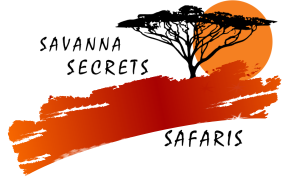
Sustainable Tourism
Savanna Secrets Safaris Limited is at the forefront of sustainable tourism, seamlessly weaving together environmental conservation, cultural preservation, and exceptional safari experiences. This dedicated approach reflects their understanding of the delicate balance between showcasing the natural wonders of Africa and ensuring their long-term protection.
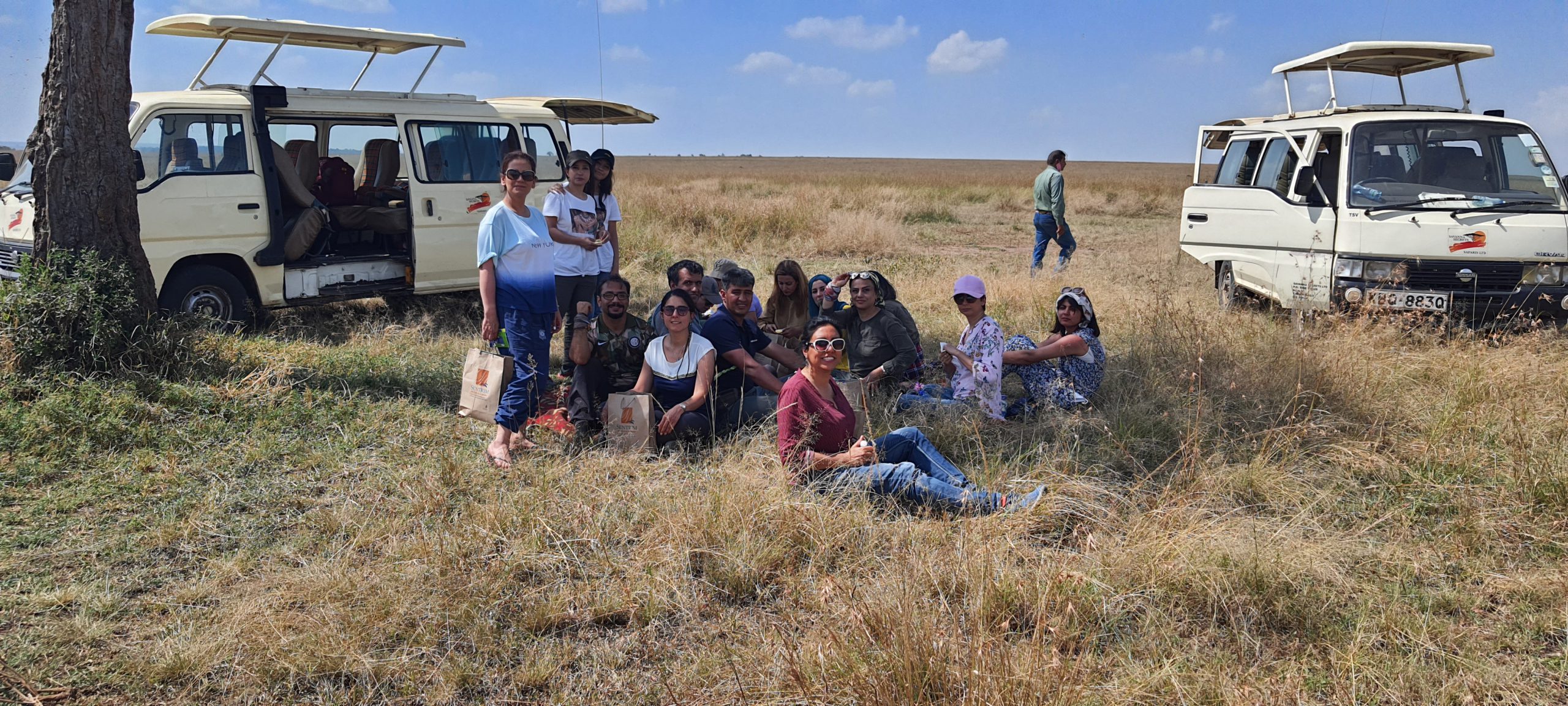
Ultimate safari adventures
Experiences.
Savanna Secrets Safaris promises a collection of extraordinary experiences that go beyond the conventional safari, immersing travelers in the heart of East Africa’s natural wonders. Each carefully curated experience reflects the company’s commitment to sustainable tourism, cultural enrichment, and unparalleled adventure. Here are some highlights of the exceptional experiences offered by Savanna Secrets Safaris:
Savanna Secrets Safaris
Unforgettable Memorable Safaris
Luxury Safari Experiences
Experiential Wildlife Encounters
Expert Guided Exploration
Experience an unforgettable, truly memorable safari
Delve into Africa’s breathtaking landscapes and diverse wildlife with expert guides and tailor-made adventures. Revel in luxurious accommodations amidst the untamed beauty of the savanna. This safari promises an immersive, once-in-a-lifetime journey, ensuring lasting memories of thrilling game drives and extraordinary encounters with nature’s most iconic creatures. Savanna Secrets Safaris creates an experience that will stay etched in your memory forever.
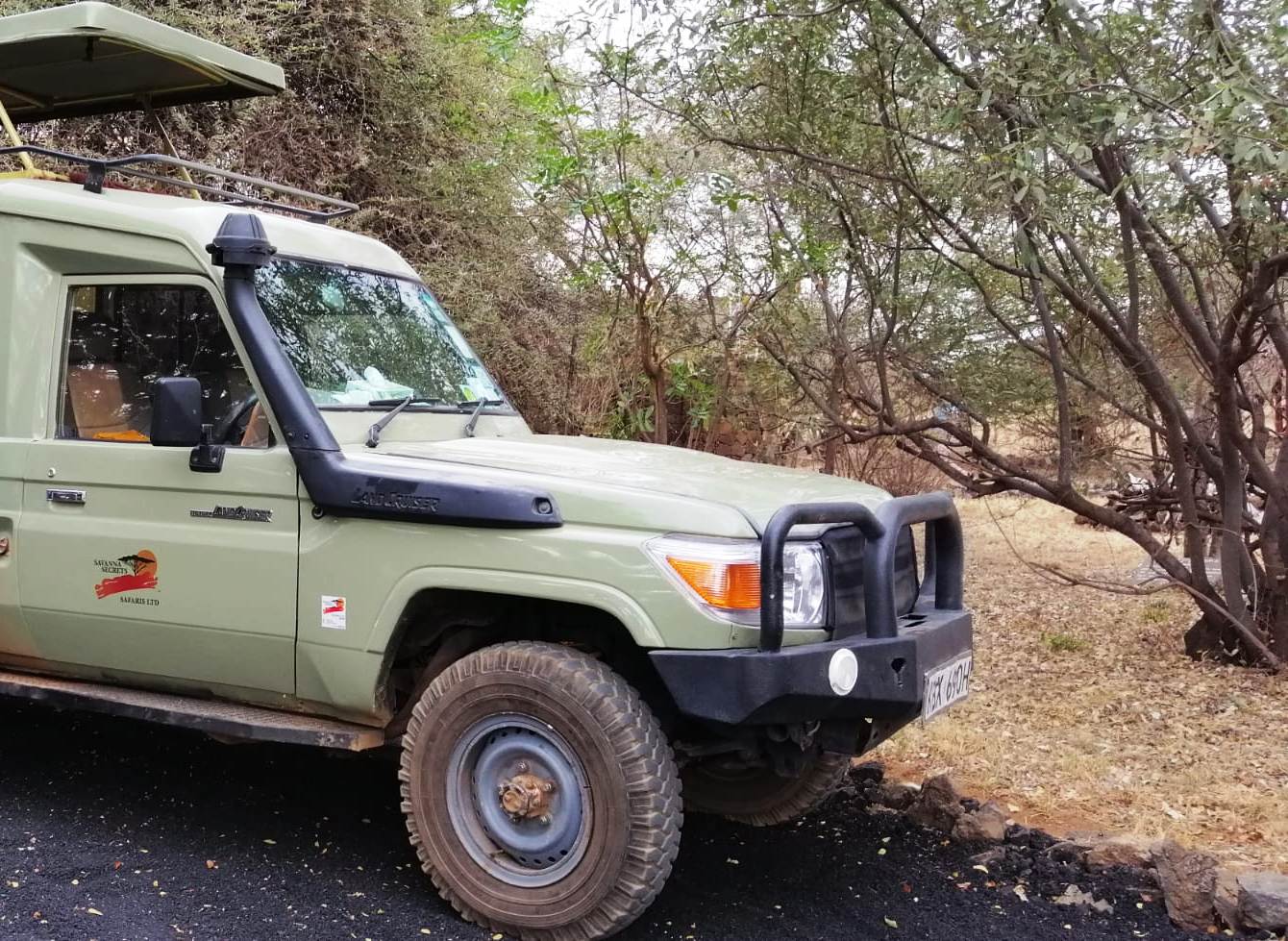
2 Days Saltlick Lodge Direct
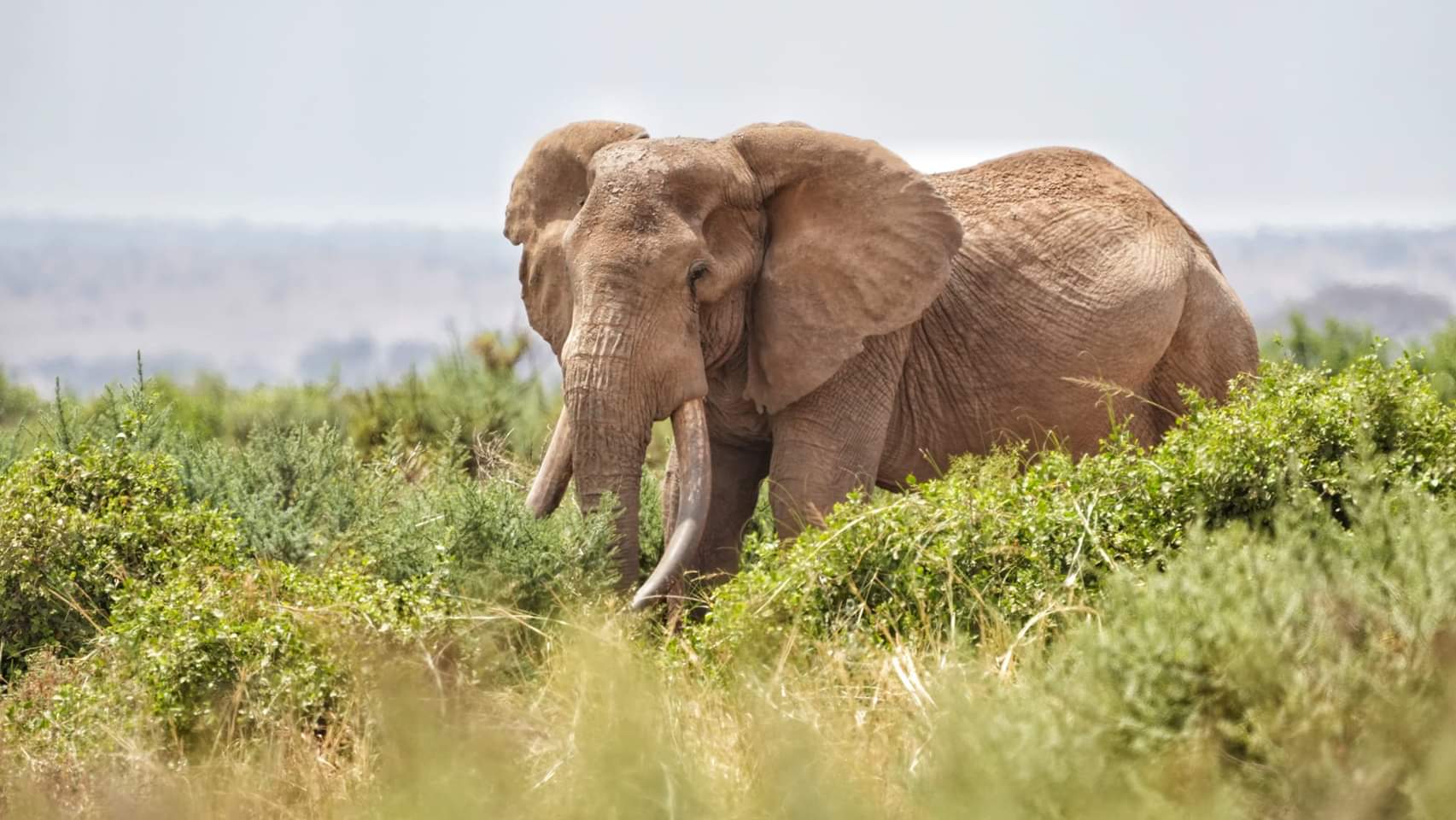
3 Days Tsavo East / West
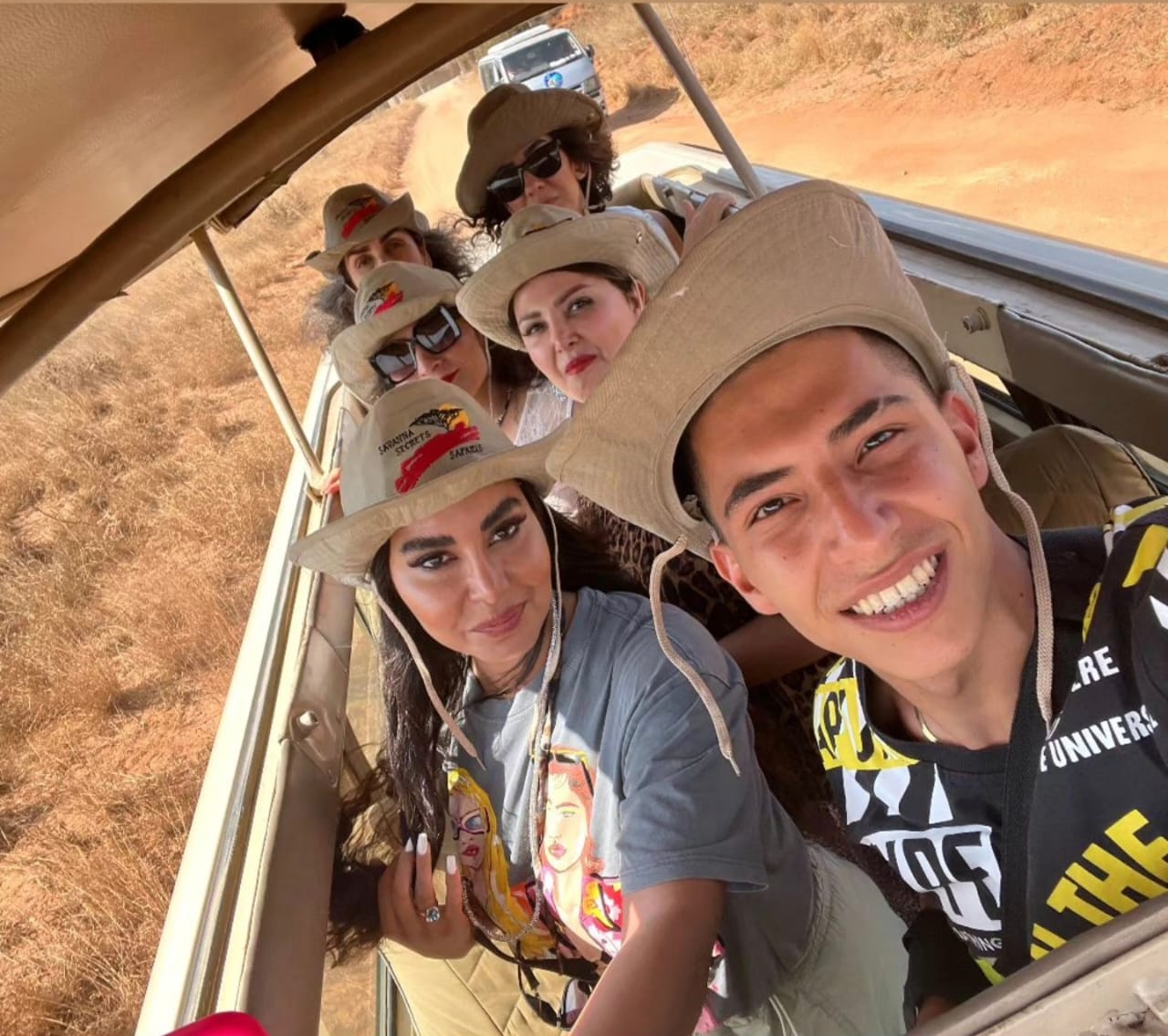
3 Days Tsavo and Amboseli
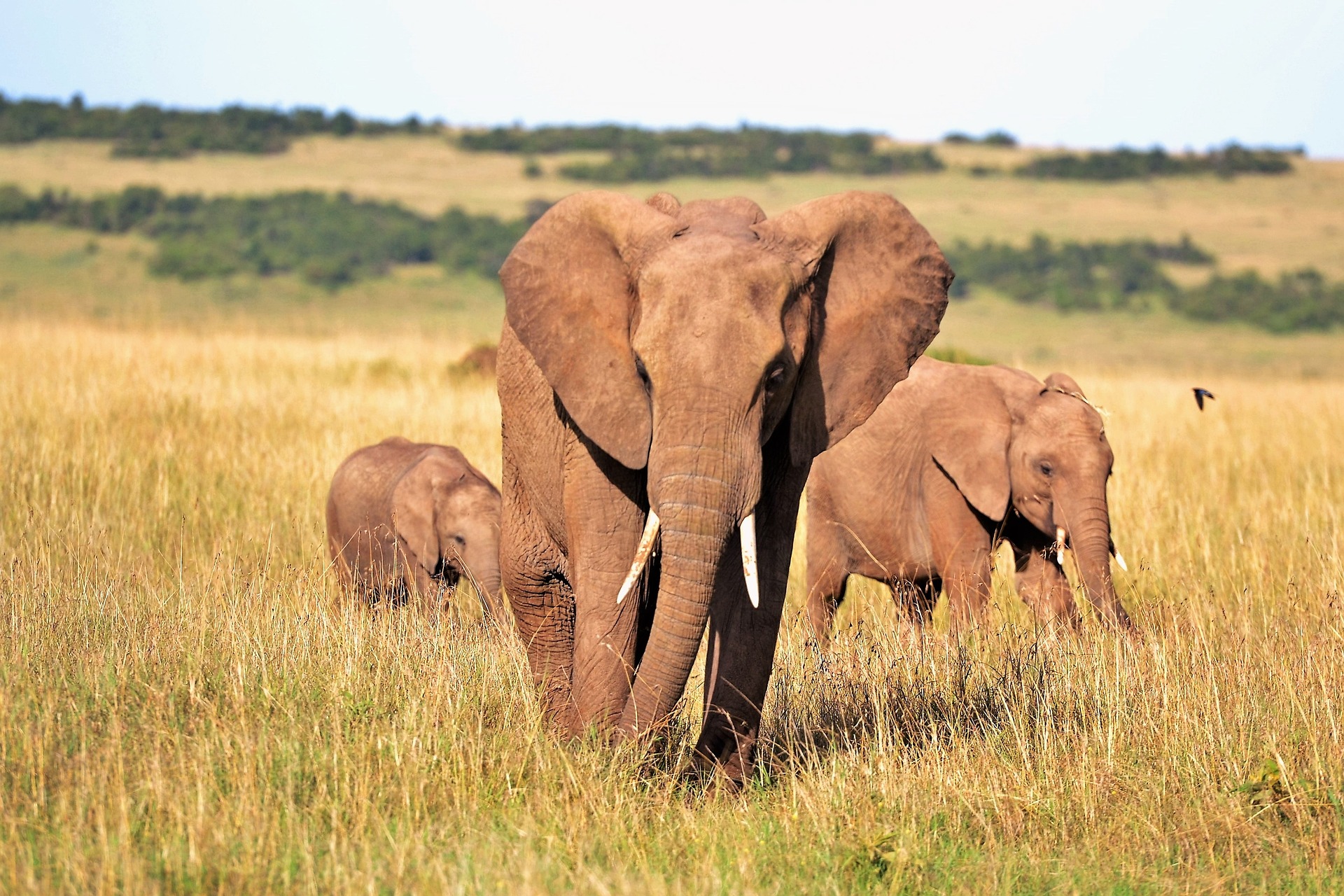
4 Days Kilimanjaro Explorer
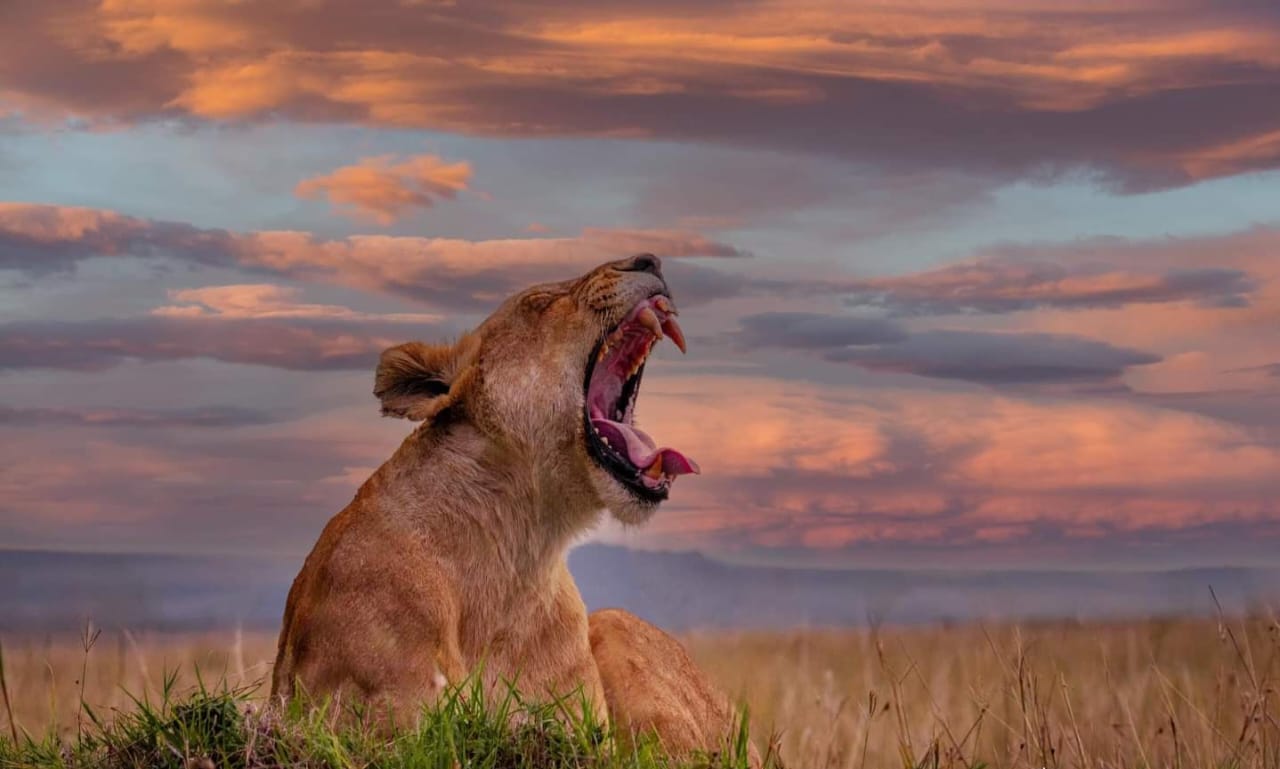
4 Days 3nights Safari To Masai Mara Game Reserve
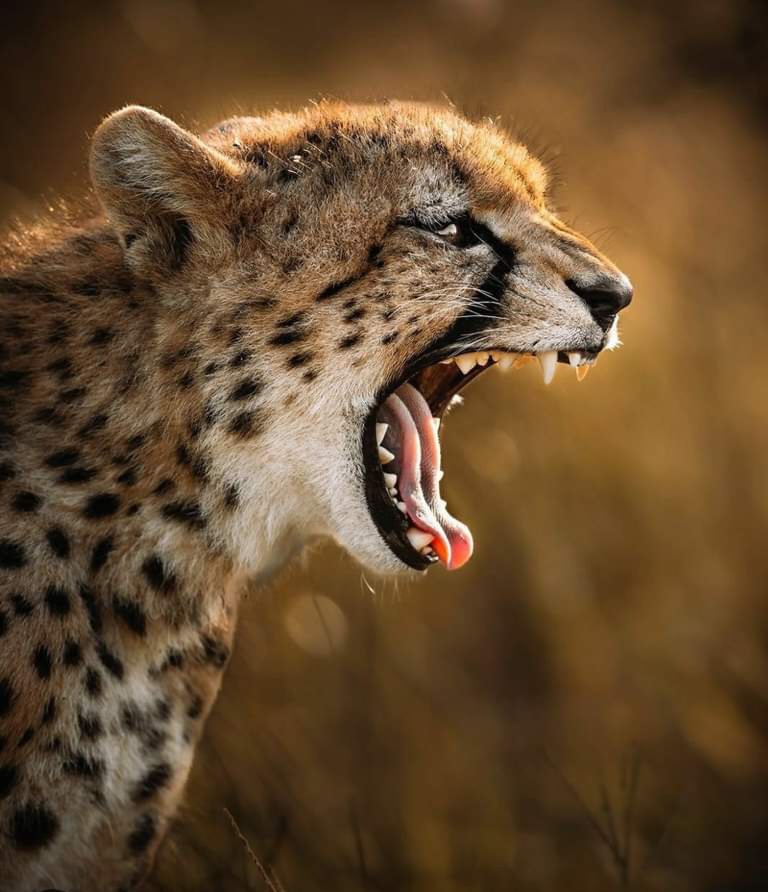
5 Days Kenya Explorer
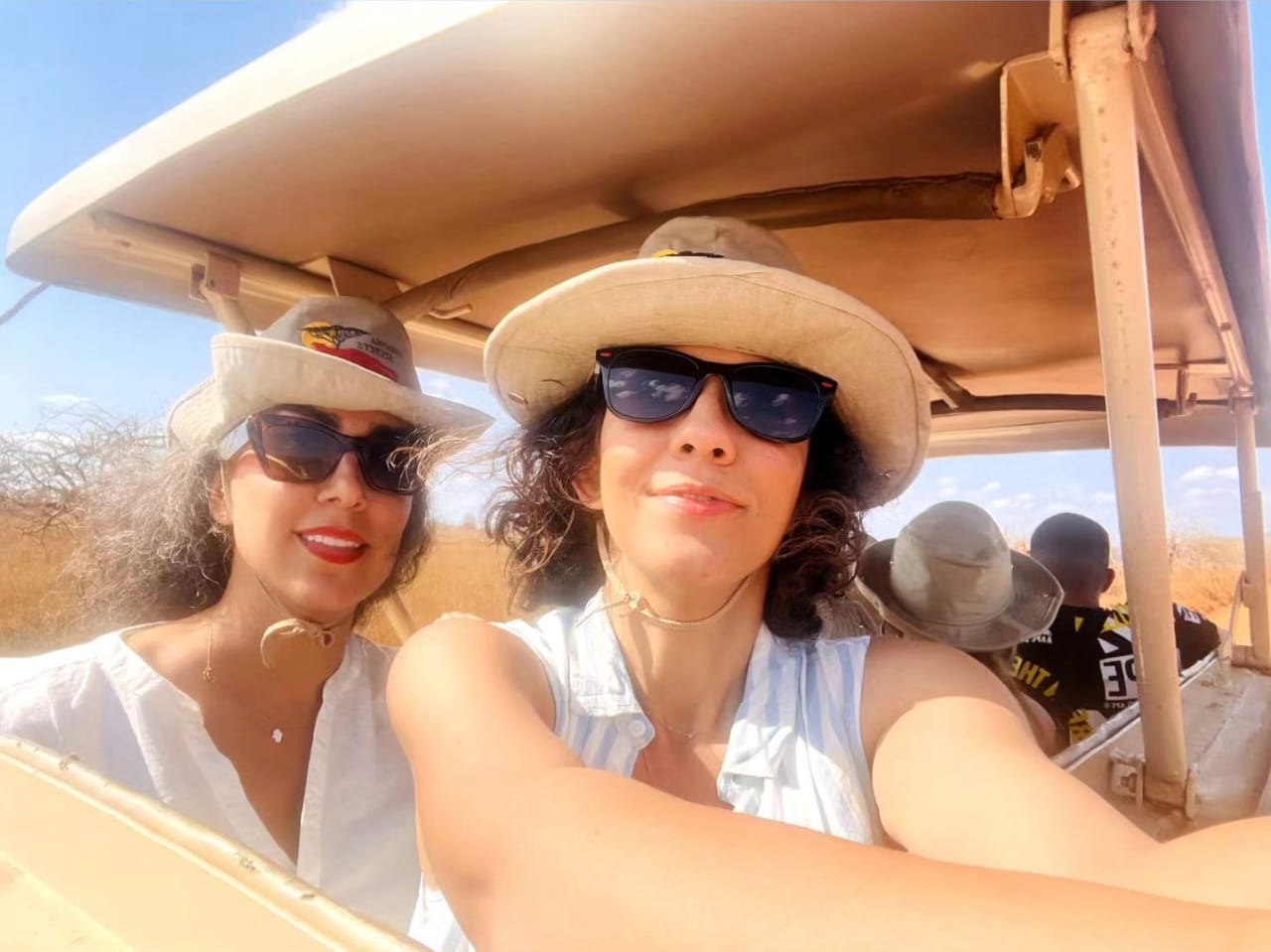
6 Days Cheetah Trail
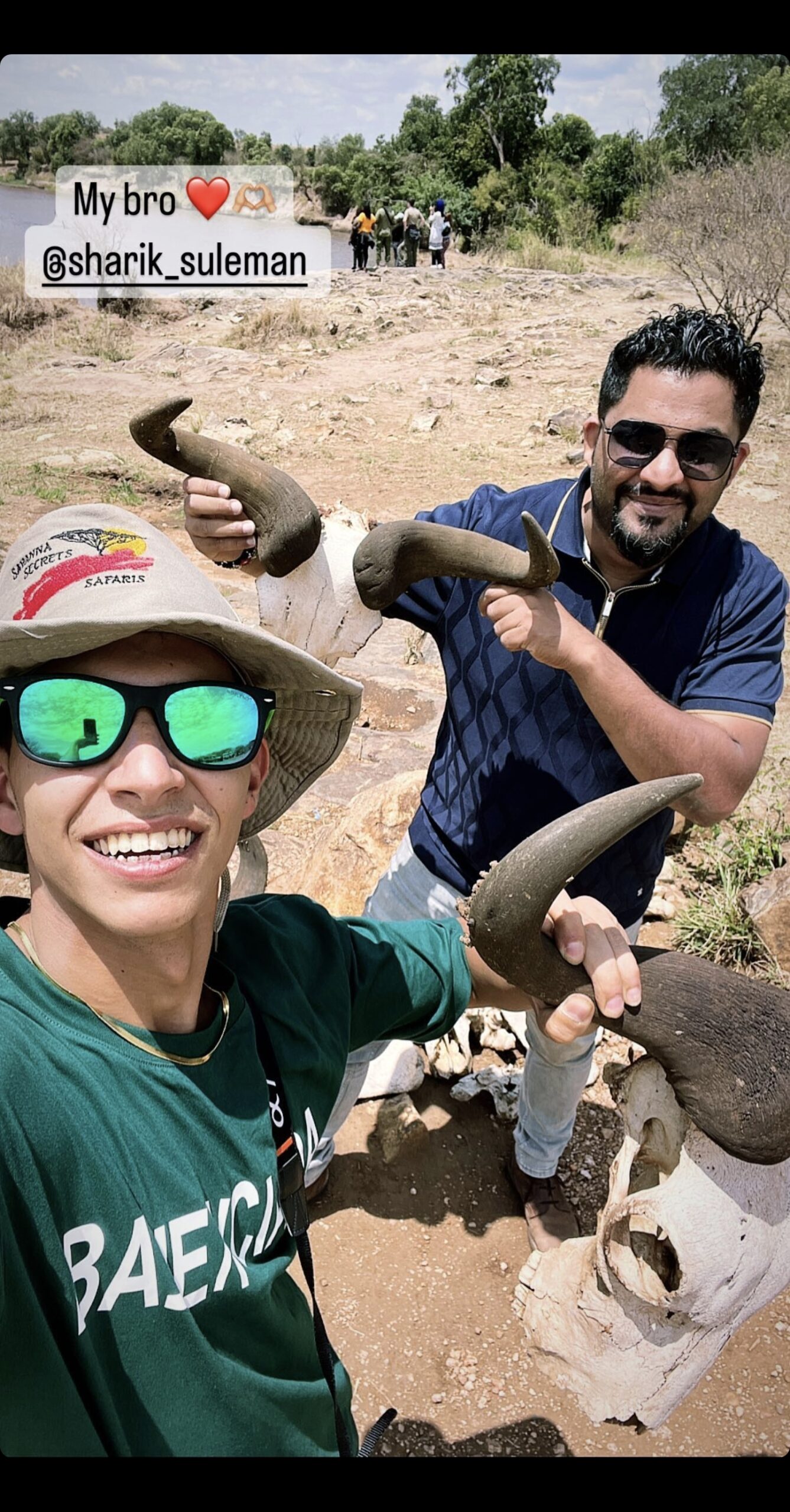
7 Days – Out of Africa Safari

Savanna Secrets Safaris in Mombasa Kenya stands out as a preferred safari company for numerous reasons. Their dedication to providing exceptional experiences, coupled with their deep expertise in the field, makes them an excellent choice. Here are several key reasons why they shine in the safari industry
Savanna Secrets Safaris: Unveiling the Wonders of Kenya’s Wilderness
Discover the ultimate safari adventures, savanna secrets safaris’ meticulously curated itinerary..
In a carefully crafted journey spanning 8 days, explore the wonders of renowned national parks like Maasai Mara and Serengeti. Encounter the Big Five on expert-led game drives, indulge in luxury accommodations, and immerse yourself in authentic cultural experiences. This itinerary promises an unforgettable, premium safari adventure through Africa’s breathtaking savannas.
Accreditation
Savanna Secrets Safaris boasts prestigious accreditation, ensuring a commitment to excellence in safari experiences. With industry recognition and adherence to rigorous standards, our accreditation underscores our dedication to providing travelers with top-tier service, expert guidance, and unforgettable adventures in the heart of Africa’s magnificent landscapes.
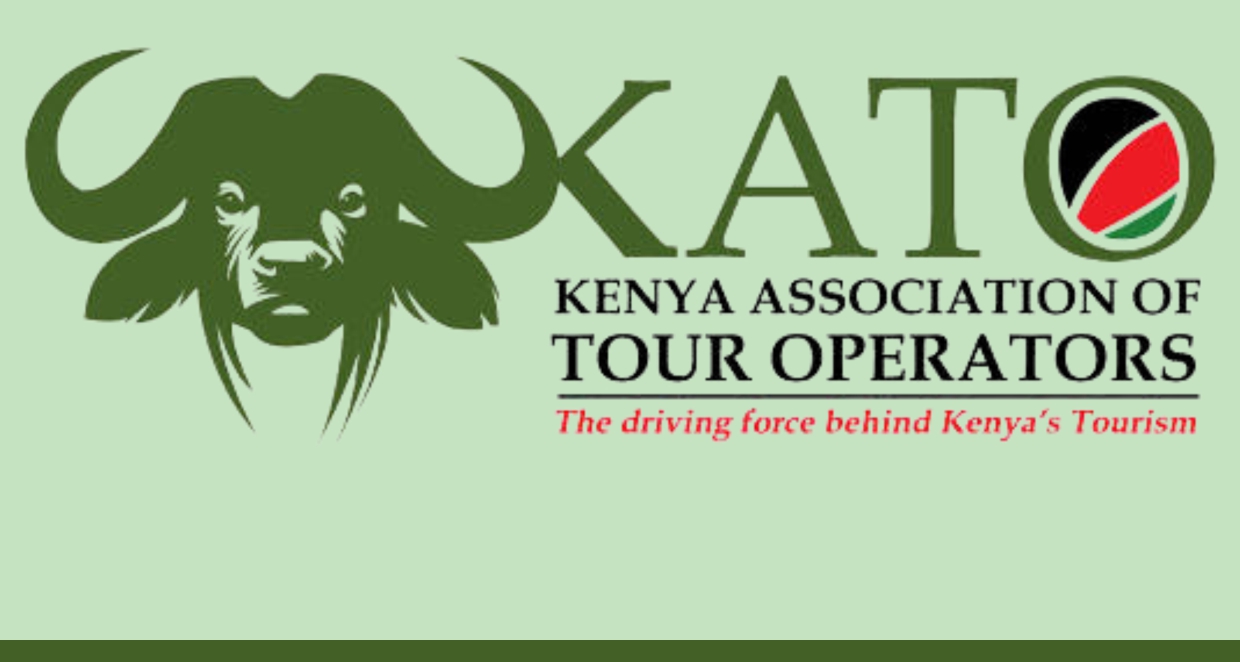
Quick Links
Safari packages, contact details.
- Changamwe - Airport Road
- P.O. BOX 80754 – 80100
- MOMBASA - KENYA
- +254 741 888 889
- +254 721 786 885
- [email protected]
LETS US CUSTOMISE YOUR ITINERARY
"Savanna Secrets Safaris craft a customized itinerary that perfectly aligned with travel preferences. From personalized game drives to exclusive cultural excursions, every detail is thoughtfully tailored, creating a seamless and unforgettable journey that surpasses expectations."
Contact us for More Details
For inquiries or to start planning your adventure with Savanna Secrets Safaris, please feel free to contact us via email. We look forward to assisting you in creating a memorable safari experience tailored to your preferences.
Let Savanna Secrets Safaris create a special customised Safari Itinerary specific for you on your Holidays Vacations in East Africa
Book this safari.
National Geographic content straight to your inbox—sign up for our popular newsletters here

17 unforgettable African safaris
Set off into the wild and see the world like never before with this guide to the best experiences in 11 countries.
Chobe National Park in Botswana holds one of Africa’s largest elephant populations.
What images come to mind when you hear the words “African safari”? Sitting in the bush on a moonlit night, so close to a lion that you can feel the rumble of its roar in your chest?
Many travelers might conjure up visions of tented camps, gourmet meals under a baobab tree, game drives through golden savanna, and sundowners at the end of the day. But safaris can also involve self-guided rental cars , game walks, and fly-fishing. Safaris can be as varied as the continent of Africa itself.
One recent trend: expeditions that enlist travelers in the fight to save endangered wildlife. Tourists make a difference by joining rhino or lion conservationists at work in South Africa or accompanying researchers working on a chimpanzee habituation project in Kibale National Park in Uganda . ( Read about the dark truth behind wildlife tourism. )

Three zebras line a waterhole in South Africa's Kruger National Park.
No matter where you go and what type of safari you choose, timing is key. Once you’ve narrowed your options, look into the best time to visit. South Africa’s summer (December through February), for example, is prime safari season in that region. You’ll still see wildlife if you go during South Africa’s winter (June through August), but pack a jacket, as temperatures can be chilly, especially before the sun rises.
Set off into the wild and see the world like never before with our guide to top safari experiences in 11 African countries.

Spot animals in these natural wonders.
South Africa
Kruger National Park: South Africa ’s largest game reserve, Kruger National Park makes a perfect home base for self-guided and first-time safaris. Stay in one of the park’s fenced camps, such as the Crocodile Bridge Rest Camp on the northern bank of the Crocodile River. Head into the bush early to explore the Southern Circle, famous for its competing lion prides and their varied hunting practices. Don’t miss the nearby hippo pool, but be sure to stay in your car outside of the camp. ( Take a solo safari through South Africa’s wild grasslands. )
Hazyview: Not far from Kruger’s southwestern Phabeni Gate, Hazyview is a family-friendly hub for horseback safaris, zip-lining, safari golf, and trout fishing. Check in to one of the lodges, such as Hippo Hollow Country Estate , and then head out into the Kruger before sunrise on a self-guided game drive to scout lions and white rhinos. Break for lunch in the town of Skukuza.
Timbavati Private Nature Reserve: The rugged Timbavati is one of the private nature reserves that make up the greater Kruger area. Guests can choose from eight lodges there. An upscale chalet at fence-free Simbavati Safari Lodges , for example, is perfect for families. Wake up early for game drives, perhaps to search for African wild dogs . Mid-morning, kids head into the bush for a scavenger hunt with a guide.
Grootbos Private Nature Reserve: Animals aren’t the only sights to track on safari. In South Africa’s Western Cape region, wildflowers provide the dazzle. The two lodges at Grootbos , part of the National Geographic Unique Lodges of the World , sit amid the smallest of the world’s six floral kingdoms, home to some 800 plant species. Watch for sharks and southern right whales from your suite’s deck. ( See the world’s best places for flowers. )

Grootbos Private Nature Reserve, located in South Africa’s Western Cape, offers a "flower safari" to guests.
Hlane Royal National Park: Head to Swaziland , a country landlocked between South Africa and Mozambique , to see Hlane ’s fiercely protected rhinos and marabou storks. Stay in one of the park’s two lodges, Ndlovu Camp or Bhubesi, and enjoy self-guided drives on the safe game-viewing roads that crisscross the park’s flat terrain. Spot lions, hyenas, giraffes, and vulturess, then picnic at the Mahlindza water hole.
Central Kalahari Game Reserve: Black-maned Kalahari lions roam this reserve in central Botswana . Stay just north of the reserve at Deception Valley Lodge , where you can watch magical sunsets dip into the horizon from the deck of your chalet.
Chobe National Park: To the north of Central Kalahari, Chobe National Park is home to one of Africa’s largest elephant populations. And Chobe Game Lodge boasts the only all-female safari guide team in Africa. ( Meet the all-female anti-poaching unit saving rhinos and other wildlife. )

Elephants enjoy a sunny day in Botswana’s Chobe National Park.
Hwange National Park: All aboard the Elephant Express to tour the Ngamo Forest Area and Hwange National Park, known for its pachyderms and 400-plus species of birds. The two-hour safari rail trip is easily accessible to Imvelo Safari Lodges’ Bomani Tented Lodge or Camelthorn Lodge . Check out the game-viewing underground hide at nearby Stoffie’s Pan. North from Hwange, a four-hour drive or a one-hour flight gets you to regal Victoria Falls, a thundering natural wonder you can hear long before you first catch sight of it.
Mana Pools National Park: Try a river-based safari in a kayak at this remote park. The best time to go may be in April, when large herds of elephants, buffalo, kudu, and the elusive eland return to the four (or mana in the local language) large permanent pools along the south bank of the Zambezi River after the rainy season. Accommodations in the park include lodges, thatched chalets, and campsites.
Namib Desert: A safari here means brilliant stargazing, silky sand, age-old views, and resilient desert animals such as oryx, bat-eared foxes, Burchell’s zebras, and loads of lizards. Stay at & Beyond’s Sossusvlei Desert Lodge , located at the desert’s eastern edge. Explore the Namib dunes on a quad bike, and hike a craggy slope to see ancient rock paintings in a nearby cave, making sure to pack water, a hat, and sunscreen. ( See eerie photos of a Namibian ghost town. )
Gorongosa National Park: Located in central Mozambique , Gorongosa has been brought back to life after suffering the devastations of many years of civil conflict. Today, when you visit, you become a part of one of Africa’s most successful wildlife restoration stories. Home to floodplains and preserved palm forests, Gorongosa has an amazing diversity of wildlife, from antelope to primates and huge Nile crocodiles, as well as lions, elephants, and hippos.

A female crocodile guards her nest of eggs beside the Mussicadzi River in Mozambique's Gorongosa National Park.
Selous Game Reserve: Visit this off-the-beaten-track and tranquil reserve in southern Tanzania for walking safaris and traditional game drives. Then cruise the Rufiji River to watch for elephants, hippos, lions, leopards, and brindled gnu. Stay at Beho Beho , a hilltop lodge that also has secluded tree-house accommodations for the extra adventurous.
Serengeti National Park: At Asilia’s Namiri Plains camp in northern Tanzania, visitors become part of the migration as they travel in a luxury mobile camp alongside herds of wildebeests, zebras, and gazelles. Walking safaris get you closer to the action, with veteran Serengeti safari guides giving the play-by-play. The animals—often stalked by big predators, such as lions and cheetahs—follow one of Earth’s most ancient routes. And if you come too close to an animal, never run. Move away quietly.
Olare Motorogi Conservancy: Cross the border from Tanzania into southern Kenya for an iconic East African lodge experience at the Mara Plains Camp. About a 2.5-hour drive from the legendary Masai Mara National Reserve, the eco-friendly camp was built by National Geographic Explorers-in-Residence Dereck and Beverly Joubert with their partners at Great Plains Conservation . From camp, you’ll head out on safari to watch migrating zebras and wildebeests make exciting and risky river crossings. You may even see a few big cats. ( Experience an air safari through Kenya. )

A lioness takes in the view of Kenya's Olare Motorogi Conservancy.
Ragati Conservancy: Kenya may be a great place to see the migrations, but it’s also a surprisingly fantastic spot for fly-fishing. On the southern slopes of Mount Kenya (Africa’s second highest peak), the Ragati Conservancy has mountain streams stocked with glistening rainbow trout. What makes the Ragati worth the trip? Nat Geo photographer and fly fisherman Pete Muller says that while Idaho fishing is amazing, “anglers won’t encounter an elephant along the Lochsa!” Fishing in Kenya, he says, also gives fishing enthusiasts the chance to visit locations such as Aberdare National Park.
Rwanda/Uganda
Volcanoes National Park/kalinzu Forest Reserve: Rwanda ’s Volcanoes National Park allows a limited number of visitors per day to hike into the jungle to view endangered mountain gorillas up close, as they groom each other, play, and eat bamboo shoots and fruits. Keep your eyes open for golden monkeys too. Nat Geo Expeditions offers an itinerary that includes a gorilla trek, then heads north into Uganda for a chimpanzee trek through the lush Kalinzu Forest Reserve near Queen Elizabeth National Park. ( Here’s how to visit the endangered mountain gorillas of Uganda and Rwanda. )
Zakouma National Park: Intense wildlife experiences await at this park known for the number of animals that make it their home. A herd of more than 500 elephants and flocks of birds, such as the black-crowned crane, in the tens of thousands, congregate here. Zakouma had a tremendous comeback after enduring civil unrest in the region. Visit between December and April, and stay at traditional Camp Nomade, its tents decorated with local carpets and brass bells.
- Nat Geo Expeditions
Related Topics
- WILDLIFE WATCHING
You May Also Like

Free roam safari: a self-guided campervanning trip through South Africa & Eswatini

20 of the coolest travel adventures for 2024
Free bonus issue.

5 game drive alternatives, from cycling to horse-riding

How locals are protecting the wildlife of the Queen Elizabeth Conservation Area

Maasai Mara & beyond: 5 must-see safari parks in Kenya
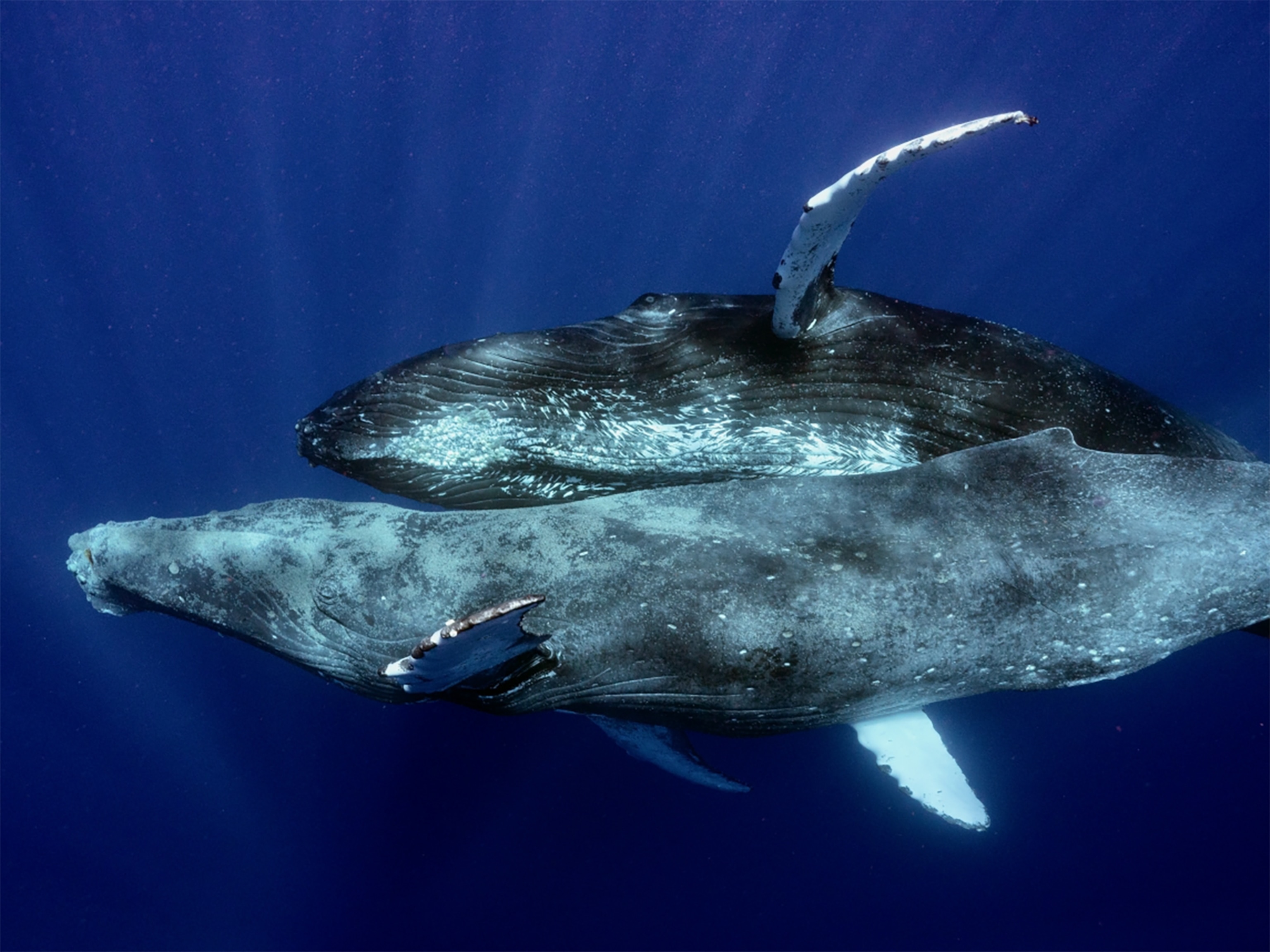
First-ever photos show humpback whales mating—and they’re males

Desert hikes and camping under the stars on a budget safari in Namibia
- Environment
- Perpetual Planet
History & Culture
- History & Culture
- History Magazine
- Mind, Body, Wonder
- Paid Content
- Terms of Use
- Privacy Policy
- Your US State Privacy Rights
- Children's Online Privacy Policy
- Interest-Based Ads
- About Nielsen Measurement
- Do Not Sell or Share My Personal Information
- Nat Geo Home
- Attend a Live Event
- Book a Trip
- Inspire Your Kids
- Shop Nat Geo
- Visit the D.C. Museum
- Learn About Our Impact
- Support Our Mission
- Advertise With Us
- Customer Service
- Renew Subscription
- Manage Your Subscription
- Work at Nat Geo
- Sign Up for Our Newsletters
- Contribute to Protect the Planet
Copyright © 1996-2015 National Geographic Society Copyright © 2015-2024 National Geographic Partners, LLC. All rights reserved
Where will you go next?
African Safaris For The Soul
Awaken Your African Dream
Book With Confidence
Savanna Dream Safaris will always go the extra mile to make your expedition to Africa unforgettable. You will have the unique opportunity to explore and experience the wildlife, landscapes and cultures of one of the most interesting, beautiful and magical places on earth.
We are safari experts
Our team is widely traveled and deeply committed to a number of conservation efforts dedicated to the preservation of the continent’s wildlife and habitat. We are passionate about all things Africa, and eager to share that passion with our clients. We are well-qualified and eager to design the perfect safari to meet your tastes and budget.
Personalized Custom Safaris
We work closely with our clients to accommodate all interests and travel preferences … from the most basic camping to high end luxury.
Species Focused Tours
If you have a special interest in a particular species, e. g. birds, elephants or big cats, we’d be pleased to tailor a safari that focuses on that interest.

our commitment
Our safaris are 100% customized, we can offer private guides and vehicles if requested. This means not having to share your guide and vehicle with other travelers. Once confirmed, we will provide you all the pre-departure information you could possibly need, including packing checklists, travel and photography tips and a wealth of other information.
where we go
Our experts will work within your budget to arrange the trip of a lifetime to all the major game reserves in Kenya, Tanzania and Rwanda. We can tailor your trip so that you visit several reserves in multiple countries or, if you want to combine relaxation with wildlife viewing, we can arrange for you to spend your entire safari in one location.
Let's start your journey!
Most popular
Our Destination Countries
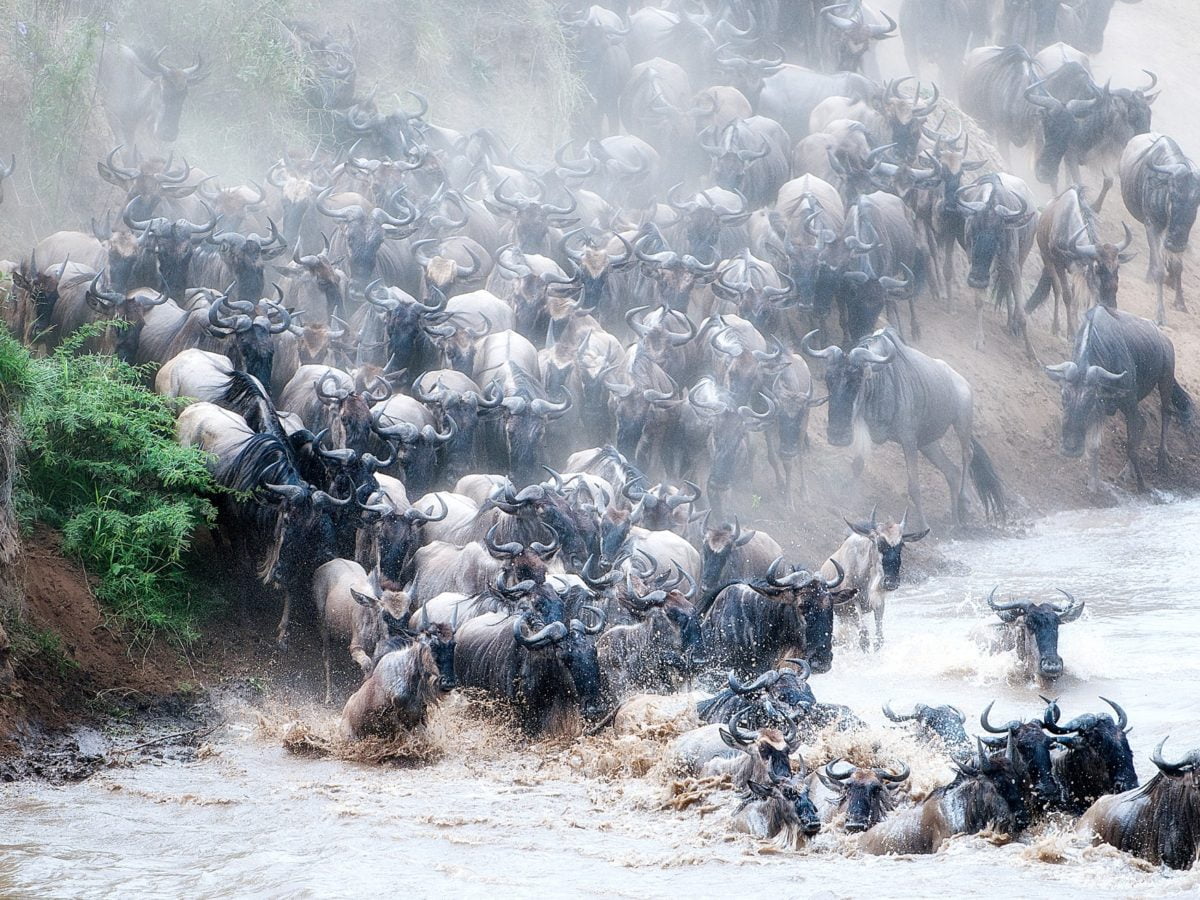
East Africa
- Kenya is one of the most exciting safari destinations in all of Africa.
- We coordinate travel to all its major game reserves and national parks, including Samburu, Laikipia, Lake Nakuru, Lake Naivasha, the Masai Mara, Amboseli and Tsavo East and West.
- The game viewing in Kenya is excellent throughout the year, but it is especially vibrant during the migration season.
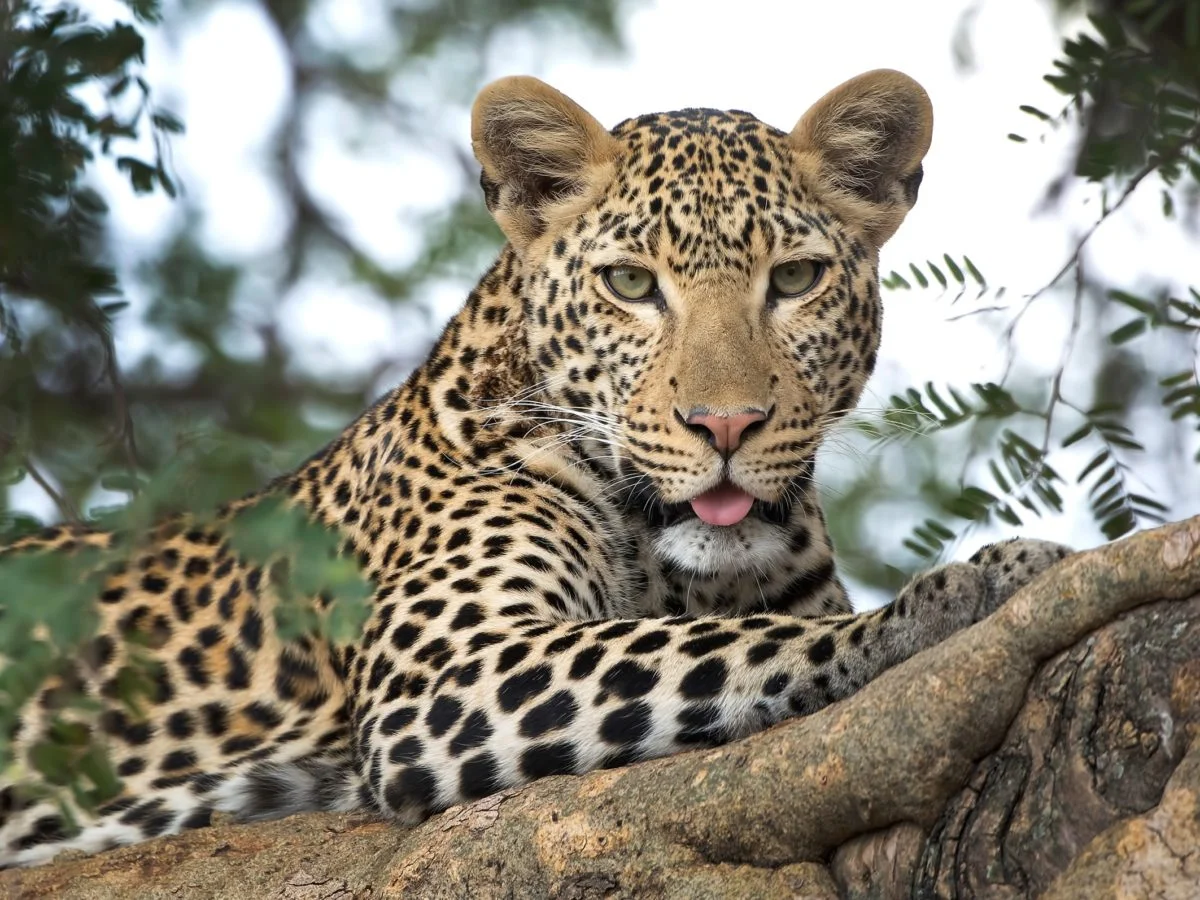
- Savanna Dream Safaris arranges travel in both the northern and southern circuits.
- This includes the world famous Serengeti, Ngorongoro Crater, Lake Manyara and Tarangire in the north. But one of our favorite destinations is Ruaha National Park in the southern part of the country.
- Ruaha boasts the highest concentration of lions in the world, and its mystical landscapes make for an unforgettable safari.
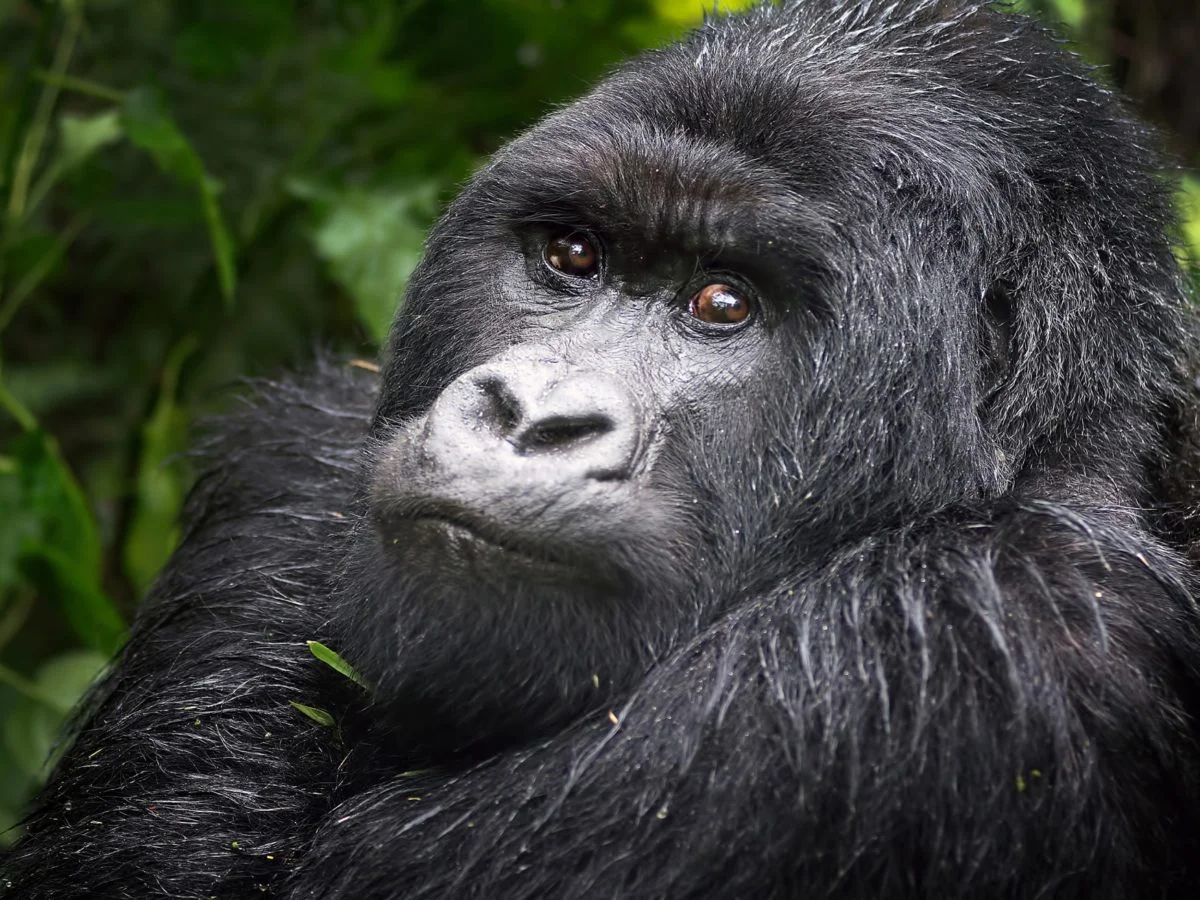
- Kigali is only a 90 minute flight from Nairobi, and quality time with the great apes in Rwanda’s Volcanoes National Park is a superb way to finish any African safari.
- Many travelers have described gorilla trekking as something near a spiritual experience.
- Rwanda is working to make Akagera National Park a premier destination. A home to giraffes, lions, leopards, elephants and a variety of antelopes.
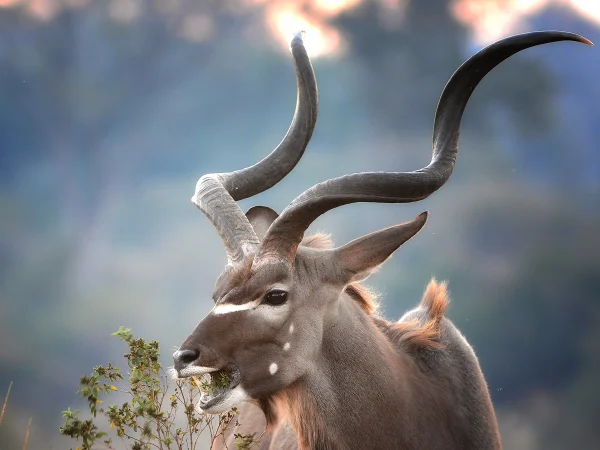
Southern Africa
South Africa
- South Africa offers a wide range of experiences for the adventurous traveler, from the gorgeous wine lands to the spectacular seashores to the astonishing wildlife.
- This extraordinary destination’s national parks and private conservancies are home to all the big cats, large herds of elephants, wild dogs, a healthy population of rhinos and an incomparable variety of bird life.
- Our team is happy to coordinate your trip to South Africa during any season, but please note that the months from May to October offer the best game viewing due to the moderate temperatures and rainfall.
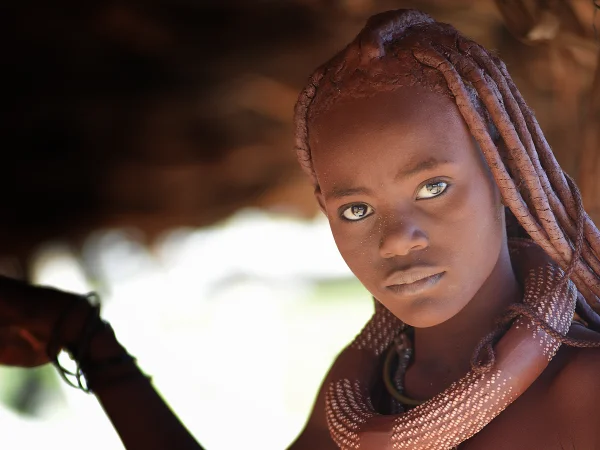
- Namibia is renowned for the stark beauty of its haunting desert landscapes, fascinating indigenous cultures and hardy wildlife.
- The great sand dunes at Sossusvlei are a “must see” for the Namibian traveler, as are the unique and insular Himba people in the northernmost reaches of the country.
- Etosha National Park’s wildlife revolves around the infrequent waterholes that dot the landscape, and its dusty, wide-open plains make this magnificent reserve Africa’s very best habitat for the cheetah.
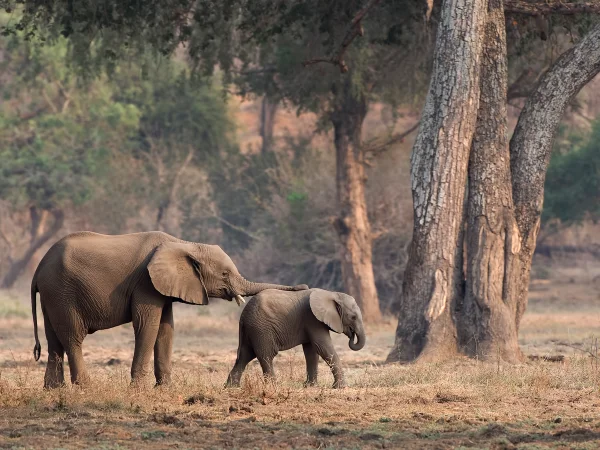
ZAMBEZI RIVER VALLEY
- We’ve included Botswana, Zambia and Zimbabwe in this section. All of these countries are remarkable in their way, well off the beaten safari path, and blessed with incomparable wildlife viewing opportunities.
- Botswana’s Okavango Delta is topographically unique, a river delta that terminates in the middle of an arid region the country. The bird life is spectacular, and the big cats have evolved to become the biggest and toughest on the continent.
- Zambia and Zimbabwe offer a different sort of safari experience. The wildlife ranges through woodland canopy and roams the banks of the legendary Zambezi River and are often best observed on foot.
Testimonials
What our travelers say.
Savanna Dream Safaris will always go the extra mile to make your expedition to Africa unforgettable.
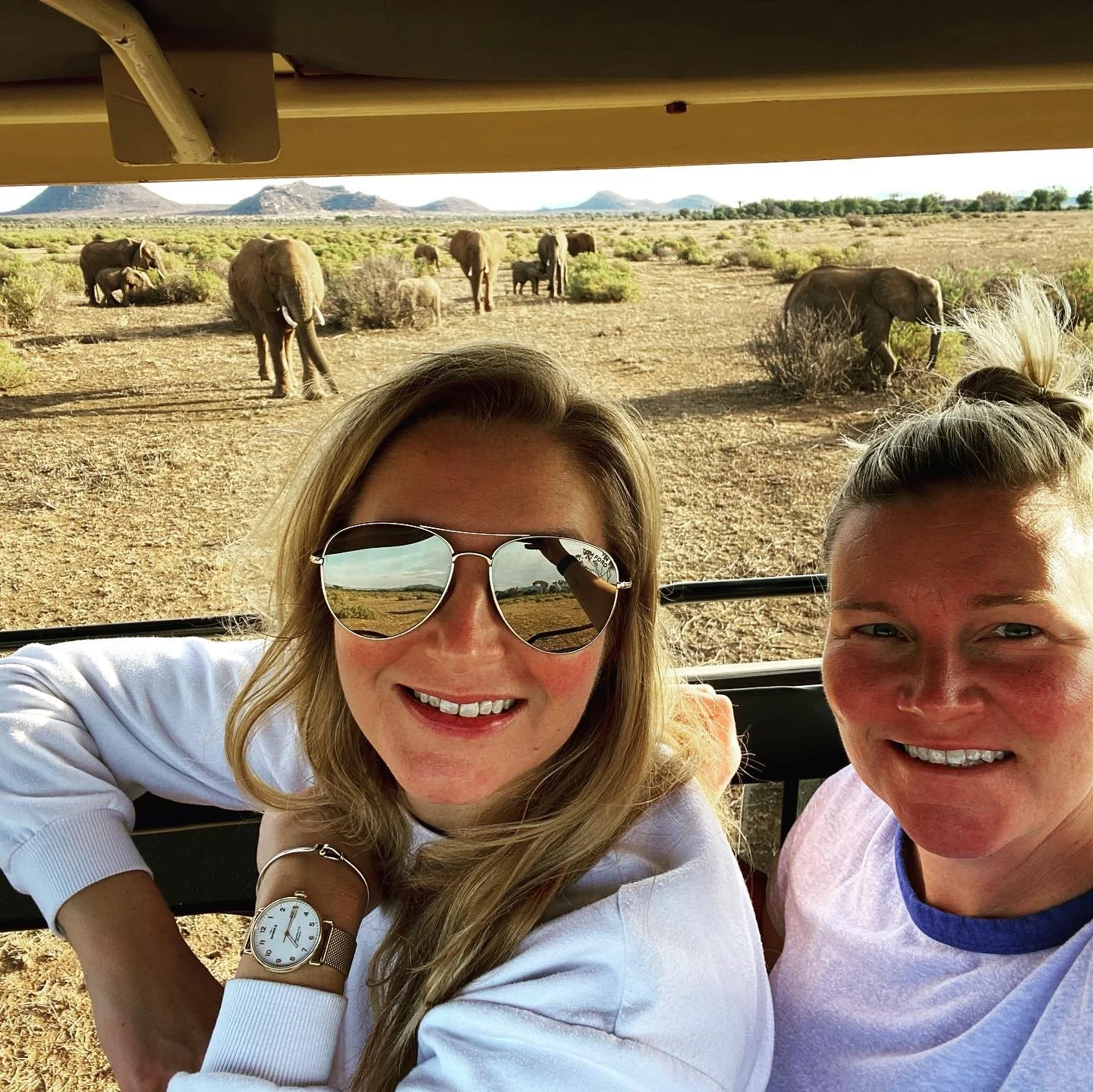
savannadreamsafaris
We are safari planning specialists who are focused on personalized and tailor made trips to Eastern and Southern Africa.


Authentic Luxury
African safari experience, a world awaits, game drives.
Experienced and dedicated career guides and trackers impart their amazing knowledge of the natural world, allowing guests to unobtrusively enter the lives of the largest and smallest creatures. From the mist shrouding the bush at dawn till the blazing sun sets behind distant mountains, the magic of a Savanna safari will provide incredible photographs and unforgettable memories.
Our safari vehicles have been specially modified for guests’ comfort and safety with bucket seats separated by large storage boxes. In order to maximise photographic opportunities, there are never more than two people in a row, or 6 guests per vehicle, unless guests request otherwise.
In addition, there are never more than two vehicles at a sighting, except with very relaxed animals in open terrain, in which case three vehicles are allowed.
The afternoon game drive includes a stop for sundowners while marvelling at the splendour of an African sunset, and the absolute tranquillity of the bush. On the morning drive there is a tea/coffee stop with the famous Savanna Amarula hot chocolate or coffee, a highly recommended alternative for the more adventurous at heart.

Neil Whyte was born and brought up in Kruger National Park where his father, Ian Whyte, was a senior researcher and is regarded as one of the foremost experts on elephants in South Africa

Daniel Fincham
Daniel was born in Zimbabwe and started his schooling in Harare before moving to South Africa in 1999. He has had a passion for the bush and wildlife from a young age

Derrick Tibane
Derrick Tibane is one of the major success stories of post-apartheid South Africa. He was born in the local village, Justicia, where he went to school and developed his love for the outdoors

Kevin Williams
Kevin grew up in KwaZulu-Natal in South Africa, but his love for adventure and the outdoors started at the tender age of five during a family fishing trip to the Zambezi River.

Aidan Dunlop
Aidan was born in Harare, Zimbabwe, and ever since he can remember he has always wanted to live a life in the natural world. A career in guiding was always going to be on the horizon!

Jamie McMaster
The sabi sand safari experience.
The Sabi Sand Wildtuin (Private Game Reserve) is a 55 000 hectare private reserve that was pioneered by local landowners in 1948. Third and fourth generation landowners committed to eco-tourism and conservation have ensured land preservation and high densities of game. Through years of eco-tourism, wildlife in the Sabi Sand is well habituated, resulting in extraordinary and incredibly close, and prolific encounters with big and small game all year round. The most prestigious game reserve in South Africa, the Sabi Sand is renowned for some of the most incredible leopard viewing in the world. Two perennial rivers, the Sabi and Sand Rivers run through the reserve, which add further dimension to the bio-diversity of this area and have created a riverine bushveld rich in wildlife.
Savanna Private Game Reserve is located in the Western sector of the Sabi Sand, and is privileged to traverse approximately 9 000 hectares of beautiful bushveld. The area offers a diverse landscape from the open Savannah grasslands up to the thick riverine bushveld.
Savanna safaris provide exceptional opportunities to see the ‘Big 5’ – lion, leopard, elephant, buffalo and rhino – as well as cheetah, wild dog, hippo, crocodile, an abundance of general game and over 400 bird species. The emphasis at Savanna is, first and foremost, on the safari experience, on the activities of the many rare and beautiful creatures encountered.

To Our Newsletter
Subscribe to our newsletter.

Neil Whyte was born and brought up in Kruger National Park where his father, Ian Whyte, was a senior researcher and is regarded as one of the foremost experts on elephants in South Africa. Growing up in the African bush has given Neil an incredible knowledge of the flora and fauna of the region and a deep insight into the ways of the wildlife which abound there.
Having studied large mammals for his honours degree, Neil had no doubt where his interests would lead him. He enjoys every aspect of the bush but has always had a real passion and admiration for elephants. Coming a close second is Neil’s lifelong interest in birds, resulting in extensive ornithological knowledge and identification skills.
Photography is Neil’s other major interest. His bush experiences provide him with ample opportunities to capture amazing shots for his wildlife portfolio. This passion for photography has been rewarded by having a photograph accepted for the cover of Africa Geographic magazine.
Neil has spent more than 20 years in private game reserves in South Africa, where he has led safaris, trained guides and been involved in lodge management. Neil and his wife, Natasha, have been at Savanna since 2006 where they have put down their roots, raising their three children as part of the Savanna Family

Daniel was born in Zimbabwe and started his schooling in Harare before moving to South Africa in 1999. He has had a passion for the bush and wildlife from a young age and went on bush and fishing excursions with friends and family at every opportunity.
Immediately after school, he commenced his training at Eco Training in the northern regions of the world-renowned Kruger National Park, after which he started working at Wilderness Safari Pafuri camp. During his two years there, he specialised in Walking Safaris, logging over 600 hours and 300 encounters with the Big Five.
After heavy flooding destroyed the lodge in Kruger, he moved further south into the private sector at Mala Mala for two years. Here he developed a passion for photography and cultivated a deeper love for birds and mammals. Daniel’s other hobbies in the outdoors include fishing, which he does at every opportunity, as well as scuba diving and travelling.
In May 2014, Daniel joined the team at Savanna, bringing with him endless energy and enthusiasm and is an integral part of the Savanna Family.

Derrick Tibane is one the major success stories of post-apartheid South Africa. He was born in the local village, Justicia, where he went to school and developed his love for the outdoors.
With little chance of a good education, he started his career as a security guard at one of the neighbouring lodges. Here, his love for nature was cemented, and he set his sights on better things.
After moving lodges to continue as a security guard, he grabbed the opportunity to train as a tracker and quickly qualified at Singita in 2000. After tracking there for four years, he moved lodges once again, where his potential as a guide was quickly seen. He qualified as a guide in 2005 at Tinga Lodge, where he worked for two years before moving to Makalali Game Lodge in 2007. Here he remained for seven years, earning great respect and gaining invaluable experience and knowledge.
In 2014, however, the distance from friends and family drew him back home. His lovely wife, Glory, is one of the head chefs at Savanna, and when the opportunity arose for us to employ another guide, we jumped at the opportunity to welcome Derrick into our family at the beginning of 2015.
He has very quickly become loved by all and has enriched the Savanna Guiding Team with his unique set of skills and knowledge, creating a much more complete wildlife experience.

During his subsequent schooling years, all holidays and pocket money were spent on fishing trips, which resulted in him being selected for the KwaZulu-Natal freshwater angling team at the age of 15, and in 1998 was crowned South African Champion!
After school, Kevin spent 16 months travelling the entire circumference of the Australian continent before returning to Africa to pursue his career in guiding. He was initially offered a guiding position in Zululand, where he gained invaluable experience and confidence, before eventually joining the Savanna Team in the world-renowned Sabi Sand Game Reserve.
Since joining Savanna, Kevin has brought his own unique style of guiding and a fresh outlook on life. He has expanded his interests and has become a very keen photographer and an avid birder.
He and Michaela, whom he met and married at Savanna, are enjoying bringing up their young family in the bush.

AIDAN DUNLOP
Aidan was born in Harare, Zimbabwe, and ever since he can remember he has always wanted to live a life in the natural world. A career in guiding was always going to be on the horizon! His passion was ignited early on by stories from his grandad who roamed across the Zimbabwean wilderness as an avid hunter and fisherman and this interest was passed down through the family. They spent many holidays going to game reserves both in Zimbabwe and South Africa, but it was his Grandad’s outlandish stories and memories that started him along the exciting path of becoming a nature guide.
They left Zimbabwe in the early 2000s and settled down on the coast of South Africa where his love for nature was reinforced by the ocean and mountains of the Western Cape and Cape Town. After completing school in 2017 and a year travelling abroad, he enrolled into a guide training school. On graduating, he worked in the Southern Sabi Sand for three and a half years and it is also here that he met his partner, Jade. After the COVID lockdowns, they decided it was time for a change and together joined the Savanna Family, where they have both become an integral part of the operation.

Jamie was born in Scotland, but thankfully his parents decided the weather was much more agreeable in South Africa and decided to relocate to our sunny shores.
Growing up in Durban, he attended Westville Boys High School on a sports scholarship for swimming. After matriculating, he embarked on a long break from South Africa in the UK, working as a beach lifeguard for a while and then served ten years in the British Army’s prestigious Parachute Regiment. Seeing sense, he decided to relocate back to South Africa and indulge in his love of nature and the bush, which was fostered by a steady TV diet of Sir David Attenborough documentaries, as well as childhood trips to Zululand’s game reserves.
He attended the NJ More Field Guide College in the Waterberg and began his Guiding career at Lion Sands in the Sabi Sand, where he worked for four years before joining the Savanna Family. He loves his birds, the predators and is passionate about the immersive experience of bush walks.
Jamie’s other hobbies and interests are overland travel, cooking, reading, History and fine whisky. Come join him in the bush for a walk and he will regale you with a tale or two, with a whisky around the fire at the end of the day.

- Savanna Suite
- Executive Suite
- Luxury Suite
- About Our Suites
- Exceptional Food & Wine
- World-Class Facilities
- Community Projects
- Wildlife Blog
- Community Blog
15 Animals to See on an African Safari
:max_bytes(150000):strip_icc():format(webp)/DSC00412-5b73daf7c9e77c0057ca2198.jpg)
The word "Africa" is an evocative one that usually goes hand-in-hand with mental images of vast savanna plains dotted with exotic game. The majority of overseas visitors to Africa will go on safari and, in doing so, discover that there is nothing more magical than a close encounter with the continent's incredible wildlife. Most of the species one sees on safari are unique to Africa, and many of them are instantly recognizable. In this article, we look at 15 of the continent's most iconic animals, including those that make up the African Big Five .
TripSavvy / Felicia Martinez
To see a lion in its natural habitat is one of the most humbling, impressive sights an African safari can offer. However, while witnessing a kill is the ultimate prize, you're more likely to see one sleeping than in active pursuit of dinner. Lions spend up to 20 hours a day at rest and are most active at dusk and dawn. They are the most social of all wild cat species, living in prides consisting of between five and 10 adult lions. Tragically, lions are threatened by human expansion throughout Africa, with experts prophesying that populations could fall by as much as five percent in the next 20 years.
Best Places to See Lions: Head to Kgalagadi Transfrontier Park on the border of South Africa, Namibia, and Botswana; or to Tanzania's Serengeti National Park during the wildebeest migration.
There is nothing quite like the first time you see an African elephant in the wild. As the largest living terrestrial animal on Earth, their size alone is overwhelming; but many visitors also find themselves drawn by the elephants' tangible aura of wisdom. Elephants are found in various sub-Saharan habitats, including forests, deserts, and savanna. They are herbivorous, processing up to 600 pounds of vegetation per day. Although most elephants are peaceful by nature, they can be dangerous if provoked; however, they are far more at risk from humans than we are from them.
Best Places to See Elephants: Vast elephant herds roam Hwange National Park in Zimbabwe and Chobe National Park in Botswana.
As the tallest animal on Earth, you'd think that giraffes would be easy to spot on safari. However, their distinctive brown and white markings serve as excellent camouflage, and it's not unusual for giraffes to materialize out of the bush just a few feet away. There are nine subspecies found across sub-Saharan Africa, all of which boast blue tongues, stubby horn-like protrusions on their heads, and of course, outrageously long necks. To drink without losing consciousness, the giraffe's neck contains unique veins and valves that regulate the flow of blood to its head.
Best Places to See Giraffes: Spot large herds of Masai giraffe in the Serengeti, or head to Murchison Falls National Park in Uganda to see the endangered Rothschild's giraffe.
The elusive African leopard is a subspecies of leopard found only in sub-Saharan Africa. Despite its wide range, leopards are among the most difficult of all safari animals to see, as they are both nocturnal and exceptionally wary of humans. Leopards use trees as observation platforms and for protection, and that is where they are most often spotted during daylight hours. They are solitary animals with exceptional predatory skills, including the ability to climb, swim, and drag prey weighing up to three times their body weight up into the trees. Leopards are classified as vulnerable on the IUCN Red List.
Best Places to See Leopards: South Africa's Sabi Sands Game Reserve and South Luangwa National Park in Zambia are famous for leopard sightings.
White Rhino
Thomas Halle/ Getty Images
The easiest way to tell Africa's two rhino species apart is by the shape of their bottom lip: wide and square for white rhinos and pointed for black rhinos. The name "white" rhino comes from a mistranslation of the Dutch word for "wide." Although the survival of both species is threatened by widespread poaching, white rhinos are more numerous and therefore easier to spot, especially in Southern Africa, where they prefer grassland and savanna habitats. White rhinos are the largest of five extant rhino species. Adult males averaging around 5,100 pounds are also one of the world's heaviest land mammals.
Best Places to See White Rhinos: Hluhluwe–Imfolozi Park and Kruger National Park in South Africa offer a good chance of spotting white rhinos.
Black Rhino
Manuel ROMARIS/Getty Images
Once found across Southern and East Africa, the black rhino is now considered critically endangered, with fewer than 5,000 individuals left in the wild and three subspecies already classified as extinct. Adult black rhinos have no natural predators, and their population collapse is predominantly due to poaching. They are killed for their horns, made of keratin, and exported to Asia for use in traditional Chinese medicine. Unlike white rhinos, which can sometimes be seen living in herds, black rhinos are generally solitary (although the bond between mother and calf is strong). They favor thick scrub and bushland.
Best Places to See Black Rhinos: Etosha National Park in Namibia is a rhino conservation success story with a thriving black rhino population. Kenya's Ol Pejeta Conservancy is another renowned sanctuary for black rhinos.
TripSavvy / Jess Macdonald
The cheetah is the most slender of Africa's big cats, a magnificent animal known for its incredible speed. They are capable of short bursts of up to 70 miles per hour, making them the world's fastest land animal. However, cheetahs often have their kills stolen by other, more powerful predators despite their speed. They are a vulnerable species with only around 7,100 individuals left in the wild, including a tiny population of approximately 40 individuals in Iran. Cheetahs are found throughout Southern and East Africa in wide-open spaces that allow them to reach their top speed while pursuing prey.
Best Places to See Cheetahs: The Maasai Mara National Reserve provides the ideal habitat for cheetahs. Alternatively, track rehabilitated cheetah on foot at Okonjima Game Reserve in Namibia.
African buffalo have a robust build and distinctive fused horns. They are grazers, typically moving in herds, with no natural predators except lions and crocodiles. Unlike other species of wild buffalo, the African buffalo has never been successfully tamed, thanks to its naturally aggressive and unpredictable nature. Although seeing a buffalo herd ranging across the savanna is undoubtedly an unforgettable sight, it's crucial to treat these animals with respect. They are responsible for multiple human fatalities every year and are considered one of the continent's most dangerous species.
Best Places to See Buffalo: Katavi National Park in Tanzania is famous for its enormous buffalo herds. Chobe National Park is another good bet.

Hippopotamus
Hippos are a common sight in Southern and East Africa's rivers, swamps, and lakes. Often found in groups of up to 100 individuals, hippos spend most of their life in water, only leaving their aquatic homes to graze on the riverbanks at dusk. They have several fascinating adaptations, including webbed feet, large canine tusks, and the ability to secrete a kind of natural sunscreen. Male hippos are territorial and, like buffalo, can be exceptionally aggressive when provoked. Similarly, take care never to get between a hippo mother and her calf.
Best Places to See Hippos: Zambia's Luangwa Valley is home to the world's largest concentration of hippos. The Okavango Delta in Botswana is also full of them.
Nile Crocodile
After the saltwater crocodile, Nile crocodiles are the world's largest living reptile, with the biggest on record exceeding 20 feet in length. In sub-Saharan Africa, they are found in various aquatic habitats, including lakes, rivers, and deltas. Crocodiles are well camouflaged in the water and are most often spotted sunning themselves on the riverbank. They have been around for millions of years, and with heavily armored skin and powerful jaws, they certainly look prehistoric. Nile crocodiles are perfect predators, employing ambush tactics to take their prey unawares.
Best Place to See Crocodiles: Watch herds of wildebeest and zebra crossing the Mara River during East Africa's annual migration to see Nile crocodiles in action.
There are three species of zebra in Africa; the plains zebra most commonly seen throughout East and Southern Africa , and the rarer mountain and Grévy's zebras. Although they may look like domestic horses, zebras are almost impossible to tame; their distinctive stripe patterns are unique to each individual as a human's fingerprints. Zebras live on grass, and in some areas, form great migratory herds to seek out the best grazing grounds. They often create a mutually beneficial relationship with another African species during the migration, the wildebeest .
Best Places to See Zebra: For sheer numbers, you can't beat the Serengeti or the Maasai Mara during migration season. To see the endangered Grévy's zebra, head to Lewa Wildlife Conservancy in northern Kenya.
Thomas Retterath/Getty Images
Easily recognizable by their tan, black, and white fur, African wild dogs are the largest (and one of the rarest) canids in Africa. They are highly social animals, living in packs led by an alpha male and female and communicating with a series of high-pitched twittering sounds. Wild dogs hunt as a team, chasing their prey until it collapses from exhaustion. Unlike other social carnivores, weaned pups are allowed to eat first at the kill to give them the best chance of survival. Nevertheless, African wild dogs are endangered, with populations declining due to habitat fragmentation, human conflict, and diseases spread by domestic dogs.
Best Places to See Wild Dogs: Top destinations for spotting wild dogs include Ruaha National Park in Tanzania, Madikwe Game Reserve in South Africa, and Hwange National Park in Zimbabwe.
The most common large carnivore on the African continent, the Hyaenidae family comprises four species of hyena: spotted, brown, striped, and aardwolf. Though their mighty jaws and strong digestive tract are ideally suited for scavenging, hyenas only feed on carrion and other refuse for 30 percent of their meals; for the other 70 percent, they prey on animals of all different sizes and shapes, including wildebeest, antelope, birds, and snakes. Hyena clans can consist of up to 100 members, and individuals will communicate with each other through wailing, screaming, and "laughing." Hyenas (particularly spotted) live in a range of habitats throughout sub-Saharan Africa, from savannas and grasslands to subdeserts and mountains.
Best Places to See Hyena: You can find hyenas in many national parks in Africa, including Hwange National Park in Zimbabwe, Namibia's Cape Cross Seal Reserve , and Ruaha National Park in Tanzania. For your best chance at seeing them, plan to sign up for a night safari.
This antelope species can be subdivided into the greater kudu and the lesser kudu subspecies, both of which can be identified by their white vertical stripes, spots, and chevron pattern between their eyes. Greater kudus are most prevalent throughout southern Africa's lowland Bushveld but can also be found throughout East Africa—particularly Kenya and the Horn of Africa region; similarly, lesser kudus tend to prefer the dense thornbush around East Africa. Males, characterized by elongated horns that can grow up to 6 feet in length, can typically be seen alone or with other bachelors, though you may find them with females during mating season. On the other hand, female kudus live in small herds with their offspring.
Best Places to See Kudu: Greater kudus are best seen in Kenya's Tsavo National Park and Serengeti National Park in Tanzania.
Warthogs thrive in savanna woodland, grasslands, and marshes, taking up natural burrows and abandoned aardvark holes. With the use of their strong neck muscles and padded knees, warthogs will spend the day foraging for food, digging through soil to uncover tubers, roots, berries, and grass. Sows can be found in matriarchal groups comprising up to 40 female warthogs and piglets, while boars prefer to live alone or with other bachelors.
Best Places to See Warthog: Warthogs live all over sub-Saharan Africa but are most common in the eastern and southern parts of the continent. If you want to spot them on safari, consider planning a trip to Kruger National Park , Masai Mara , or South Luangwa National Park in Zambia.
The Top 5 Places to See Leopards in Africa
Fun Facts About African Animals: The Cheetah
Serengeti National Park, Tanzania: The Complete Guide
Akagera National Park, Rwanda: The Complete Guide
Top 10 Unmissable African Safari Destinations
Okavango Delta, Botswana: The Complete Guide
An Introduction to Africa's Big Five Safari Animals
The Top 12 National Parks to Visit in Africa
13 Amazing Trips to Take Before You Turn 40
Best Places to Visit in Tanzania
10 Destinations to Top Your Africa Bucket List
10 of the Best Places to Visit in Botswana
The Ultimate Guide to Choosing the Right Safari for You
How to Experience the Great Migration in Kenya and Tanzania
Fun Facts About Africa's Baby Safari Animals
The 18 Best Things to Do in Tanzania
Protect Your Trip »
12 Top African Safari Tours
Cross this must-do activity off your bucket list.

Courtesy of Micato Safaris
Spot the big five on your safari adventure.
Safari tours in Africa are just as diverse as the continent itself, though these types of trips typically require a large sum of money. Whether you want to spend a few days gorilla trekking in Uganda or a couple weeks spotting the "big five" – lions, leopards, African elephants, rhinos and Cape buffalos – in South Africa, you'll find an array of tours to best suit your needs. To help you narrow down your options, U.S. News compiled a list of 12 can't-miss African safari tours. Read on to find your once-in-a-lifetime trip.
Note: Some of the African countries in this article may require travelers to get an entry visa and certain vaccinations in order to visit. Jump to the list of visa and vaccination requirements by country at the bottom of this page for more information.
&Beyond

Courtesy of &Beyond
Visitors who don't want to sacrifice creature comforts while on safari will appreciate &Beyond's offerings. During the tour operator's 10-day Kings of the Jungle safari – which starts at $11,340 per person – travelers will see breathtaking natural wonders like the Ngorongoro Crater and the Maasai Mara savanna. But the highlight of this journey is its four-night stay at Tanzania's Serengeti National Park . After watching animals like wildebeest and zebras partake in the great migration while also spotting lions, giraffes and more, vacationers retreat to high-end tents and lodges with private bathrooms.
[See more of Serengeti National Park: Things to Do | Hotels | When to Visit | Photos ]
Wilderness Safaris

Courtesy of Wilderness Safaris
For some of Africa's most jaw-dropping scenery, opt for the seven-night Namibian Adventure Safari tour offered by Wilderness Safaris. This weeklong trip features visits to the Namib Desert's dune-filled Sossusvlei region (which you may recognize from the film "Mad Max: Fury Road") and the mountainous Palmwag Concession – a protected area with springboks, giraffes, black rhinos and more. The package's per person fee starts at $6,725, which covers most meals, park entrance fees, and transfers from Namibia's capital Windhoek and between the safari destinations. It also covers your stay at properties like the fully solar-powered Hoanib Skeleton Coast Camp and the five-star Little Kulala lodge amid the stunning desert.
Wild Rwanda Safaris

Courtesy of Wild Rwanda Safaris)
Adventurous travelers sticking to a more conservative budget should consider Wild Rwanda Safaris' Bwindi Gorilla Safari. The three-day package features a full day in southwestern Uganda's Bwindi Impenetrable National Park (a haven for silverback gorillas) and an adjacent Batwa Pygmy community. Wild Rwanda Safaris allows guests to choose between midrange, luxury and super luxury accommodation, which can help keep costs down if necessary. The company's packages include the $700 permit required to visit the gorilla park. The round-trip journey by safari vehicle to and from Kigali, Rwanda, and English-speaking guide services are also covered in all rates. The tour can begin from Kampala, Uganda, as well, although you'll spend longer on the road to the park.
Nomad Tanzania

Courtesy of nomad-tanzania.com
Sign up for Nomad Tanzania's Southern Tanzania safari and you're bound to get an up-close look at Tanzania's diverse wildlife. Offering eight days of activities, including game drives and boat trips in Ruaha National Park and Nyerere National Park, this safari gives you prime opportunities to spot lions, cheetahs, leopards and elephants, among other species. What's more, lodging at the company's campsites, select meals, and flights to and from Dar es Salaam are factored into the package's prices. Expect to pay a minimum of $5,700 per person; prices vary depending on the time of year, and the tour isn't offered in April and May.
Micato Safaris

If you want to explore multiple destinations while on safari with plenty of comfort (but a price tag to match), book the 15-day Micato Grand Safari. This outing by Micato Safaris starts with a two-day visit to Nairobi, Kenya, before continuing to the Lewa Wildlife Conservancy, Maasai Mara National Reserve, and the Amboseli and Serengeti national parks for wildlife-viewing excursions. During your trip, you'll see Mount Kilimanjaro as zebras, gazelles and more roam in the foreground. The package costs at least $22,450 per person (based on double occupancy rates) and includes a hot air balloon ride, a camel tour led by members of the Samburu tribe, and lodging at upscale properties like Serengeti's Four Seasons outpost. The company also offers various extensions allowing you to explore other parts of Africa, from the island paradise of Zanzibar to the deserts of Namibia.
Rothschild Safaris

Courtesy of Rothschild Safaris
If your ideal safari vacation consists of customizing your trip from start to finish, consider an outing with Rothschild Safaris. The company offers itineraries in locales like Zambia and Madagascar , but if you're hoping to catch a glimpse of the big five animals, the Essence of Tanzania safari is a good bet. This nine-day experience, which embarks from Arusha and returns there by plane, includes game-viewing drives in Tarangire National Park and accommodations like canvas tents and farmhouse lodges. Elephants, zebras and lions are just some of the animals you may spot during your journey. You'll also have the opportunity to go on a nighttime safari to spot nocturnal wildlife.
Lion World Travel

Courtesy of Lion World Travel
As the trip name implies, Lion World Travel's 10-day Best of Cape Town & Botswana vacation package combines sightseeing in Cape Town, South Africa , with a classic safari in Botswana. During the latter half of the itinerary, visitors will explore Botswana's Okavango Delta (home to cheetahs, crocodiles, hippos and more) and Chobe National Park, which is believed to have Africa's largest elephant population. Prices start at $4,299 per person and cover game drives; many of your meals; and stays at luxury hotels, camps and lodges. You'll need to pay an extra charge for the flights within the tour (Cape Town to Botswana as well as Botswana to Johannesburg ).
[See more of Cape Town: Things to Do | Hotels | When to Visit | Photos ]
Bearded Heron Safaris

Neil Heron | Courtesy of Bearded Heron Safaris
Travelers keen on seeing South Africa's Kruger National Park through the eyes of a local naturalist will appreciate the 15-day safari with Bearded Heron Safaris. Led by Neil Heron, a nature guide and wildlife photographer and writer, Bearded Heron Safaris' longest option features small game drives that may include lion, rhino, zebra and leopard sightings throughout all corners of Kruger. Rates are inclusive of in-park cottage accommodations and all breakfasts, dinners, snacks and drinks. Flights and park fees are not included. For a 15-day safari, expect to pay 76,900 South African rand (about $4,500) per person.
[See more of Kruger National Park: Things to Do | Hotels | When to Visit | Photos ]
Discover Africa

Getty Images
For an inside-out trip through the natural wonders of Botswana, Discover Africa's nine-day Epic Botswana Adventure is a formidable option. You'll start out at a riverside lodge on the Chobe River – a great location for elephant spotting – before moving onto the marshy Okavango Delta, a wildlife-rich area where you can spot a huge range of animals from leopards to rhinos. The safari ends at the Makgadikgadi Pans National Park, a good place to admire wildlife like zebras and buffalo on the savanna as well as salt pans from a former lake. You'll stay in upscale lodges and campsites within close reach of the wilderness. All meals and transport along the tour are included in the price tag (which starts at $4,800 per person), but international flights are excluded.
Wild Wings Safaris

If you're looking to have a broader experience that mixes in some history and beach time, consider Wild Wings Safaris' eight-day Battlefields, Bush and Beach Safari. You'll start off visiting some of South Africa's historic sites from the Boer wars, before moving on to the Phinda Private Game Reserve, which doesn't allow day visitors, so you should be able to look out for the big five without too many crowds. The tour wraps up at Thonga Beach Lodge, where you can snorkel or scuba dive near coral reefs in the Indian Ocean. As far as safaris go, this one is an affordable option, starting at about $2,795 per person with all meals included as well as a rental car; for the cheapest price, you will need to drive yourself between the destinations, but it's possible to pay an additional fee for a driver to guide you instead.
Cuckoo Safaris

This tour company kicks off its tours from the majestic Victoria Falls in Zimbabwe, with a host of safaris that range from two days to nine, across Zimbabwe, Zambia and Botswana, including some family-friendly choices. For an affordable option, there's the four-day Discover Victoria Falls, Chobe and Hwange Park safari, which will take you on two full-day tours to Chobe National Park (across the border in Botswana) and to Hwange, Zimbabwe's largest national park, where you should keep your eyes peeled for lions, elephants and more. This safari also includes a sunset cruise on the Zambezi River. The price starts at $900 per person, which includes the tours plus breakfast, lunch and lodging in Victoria Falls; travelers will need to pay for entrance fees to the parks and dinner.
Compass Odyssey

Courtesy of Compass Odyssey
Explore the savanna and deserts of southwest Africa with Compass Odyssey's eight-day Namibia Wildlife Safari. You'll visit a community-based conservation area in Damaraland – known for its desert-adapted elephants, oryx, giraffes and other wildlife – while staying in the rustic-chic Doro Nawas Camp. You'll also spend two days in Etosha National Park, seeking wildlife at the park's bustling waterholes by day and embarking on an evening game drive as well. Starting at $3,750 per person, the tour includes most meals and all park entry fees, but not flights; the company does allow the tour to be customized on request.
Vaccination and visa requirements for African countries
Some popular safari destinations may require you to have received certain vaccinations in order to enter the country as a tourist. Inoculation requirements can include vaccination against COVID-19 and yellow fever, and you'll need to get these vaccines before departing on your trip. Be sure to bring proof of vaccinations with you. If you are transiting through another country en route to your safari tour, you must check that you also meet immunization requirements for the stopover location.
Note that, outside of what's required, there are a number of other vaccinations that are recommended, so ensure you're up to date and fully protected before you travel. In addition, many safari locations are prone to malaria; you should consult with your doctor to see if you need to bring anti-malaria medication on your trip.
Safari countries have varying visa requirements for travelers from the U.S. – these are detailed below. Depending on your itinerary, you may need a single- or multiple-entry visa, and some visas require you to apply in advance of traveling and/or have a certain number of blank pages in your passport. Regardless of your destination, your passport should be valid for at least six months before you leave for your trip.
Here are the vaccine and visa requirements for major safari destinations as of November 2022:
Botswana: If you have recently visited a country where yellow fever is common, you will need to be vaccinated against this illness. This does not include the U.S. but does include a number of countries in Africa, Central and South America. Consult the World Health Organization's website for a list of countries with risk of yellow fever transmission, including Kenya and Uganda.
U.S. citizens and nationals can stay in Botswana for 90 days without a visa.
Kenya: Travelers to Kenya must have been vaccinated against COVID-19 with the last shot administered more than 14 days before arrival in the country. Unvaccinated visitors can enter with a negative PCR test, conducted no more than 72 hours before departure. Proof of COVID-19 tests or vaccines must be uploaded to an online system called Panabios. Kenya is a country where you'll be at risk of yellow fever transmission; it also requires those traveling from other places with yellow fever or cholera outbreaks to be vaccinated against these illnesses. The Centers for Disease Control and Prevention recommends that you protect yourself against yellow fever before your trip here.
Americans need an e-visa to enter Kenya. You should apply online at the eVisa government website no more than eight weeks before your trip, as visas are not available upon arrival in Kenya. See more on the U.S. Department of State's website .
Namibia: Those traveling from a country where yellow fever is common need to be vaccinated against it. No visa is required as long as you're staying for 90 days or less.
Rwanda: If you're coming from a country where yellow fever is endemic, a yellow fever vaccination is required before departure.
U.S. citizens and nationals can be issued a 30-day visitor visa on arrival in Rwanda or through the Rwandan Embassy in Washington, D.C. A single-entry visa costs $50, and it's recommended you bring sufficient cash in U.S. dollars to pay for this (although credit card payment may be accepted at Kigali International Airport). Consult the State Department website for more information.
South Africa: A yellow fever vaccination is required if you're traveling from a country with a risk of transmission. No visa is required for stays of 90 days or less.
Tanzania: Travelers must be able to present proof of COVID-19 vaccination with a QR code to enter Tanzania. Unvaccinated travelers must take a PCR test no more than 72 hours before departure, and the test results should be accessible by QR code. Yellow fever vaccines are mandatory if you're traveling from a location where yellow fever is present – including if you spend more than 12 hours in transit in such a country.
Visas are required for tourism in Tanzania. You can apply for a single-entry, 90-day visa online for $50 – and be sure to print a copy of the approval to bring with you. The processing period takes up to 10 days. You can also obtain a visa on arrival for a $100 fee; it's recommended you bring cash to cover this. Find more Tanzanian visa information on the State Department website .
Uganda: To enter Uganda, you must either be fully vaccinated against COVID-19 or present a negative test taken no more than 72 hours before departure. Like Kenya, Uganda is a country with risk of yellow fever transmission. All visitors must show proof of vaccination against yellow fever to enter Uganda, regardless of where you're traveling from.
American visitors to Uganda must apply online for an electronic visa before departure; arriving in Uganda without completing this process could result in your detainment. Visit the State Department website to learn more.
Zambia: Visitors who are fully vaccinated against COVID-19 must show proof of vaccination but do not need a test to enter Zambia; unvaccinated travelers must undergo a PCR test no more than 72 hours before departure. Yellow fever vaccines are only required if you're coming from an area considered at risk.
Visas are required to visit Zambia, but these can be obtained online before your departure or at a port of entry. Check the State Department website for more details.
Zimbabwe: To enter Zimbabwe, travelers must either be fully vaccinated against COVID-19 or must take a negative PCR test no more than 48 hours before your departure. As with other countries on this list, visitors from countries with yellow fever outbreaks also require a vaccine against this illness.
U.S. visitors can obtain a 30-day, single-entry visa upon arrival in Zimbabwe for $30. If you're taking a tour that requires you to leave and reenter Zimbabwe, be sure to get a double-entry visa for $45. You can learn more from the State Department website .
You might also be interested in:
- The Top Passport Wallets (That Also Hold Vaccine Cards)
- The Best COVID-19 Travel Insurance Options
- The Best International Travel Insurance Plans
- The Best Zoos in the U.S.
- The World's Best Places to Visit
Tags: Travel , Vacation Ideas
World's Best Places To Visit
- # 1 South Island, New Zealand
- # 4 Bora Bora
If you make a purchase from our site, we may earn a commission. This does not affect the quality or independence of our editorial content.
You May Also Like
Flight canceled or delayed what to do.
Amanda Norcross April 26, 2024

The Best Beach Hats
Megan Johnson and Sharael Kolberg April 26, 2024

The Best Florence Tours
John Rodwan April 25, 2024

The 9 Best Louisiana Swamp Tours of 2024
John Rodwan April 24, 2024

How Much Does a Cruise Cost?
Gwen Pratesi April 24, 2024

The Best Whale Watching in Cape Cod
Lyn Mettler April 24, 2024

Best Whale Watching Tours in Maine
Marisa Méndez April 23, 2024

The Best Wineries in Napa Valley
April 23, 2024

The Best East Coast Beaches
April 19, 2024

The Best Carry-on Luggage
Erin Evans , Rachael Hood , Catriona Kendall , Amanda Norcross and Leilani Osmundson April 17, 2024

About Savanna Safaris
Savanna safaris is a small group safari company that offers 8-12 day private escorted tours to South Africa and Victoria Falls, Zimbabwe. During the first part of your South African Safari, you will explore Cape Town, one of the most beautiful cities in the world, with passionate local guides that will share their intimate knowledge of Cape Town and its surroundings. You will experience the magnificent Table Mountain and its spectacular views of the city and its gorgeous coastline. Your local guide will also show you some of the smallest penguins in the world on your way to Cape Point, the southern most tip of the African continent, where you can see the meeting of the Atlantic and Indian Oceans as well as hike some beautiful trails within the nature reserve. While in Cape Town, you will also visit the world renowned Cape winelands where you can sample some of the best wines. Next on your South Africa and Victoria Falls, Zimbabwe safari, you will get up close and personal with Africa's Big 5 (lion, elephant, rhino, leopard, and buffalo) as well as many other beautiful and majestic animals in the country that boasts the world’s best safari lodges and game viewing experience. Here you will learn about the flora and fauna while tracking big game with experienced safari guides and trackers.
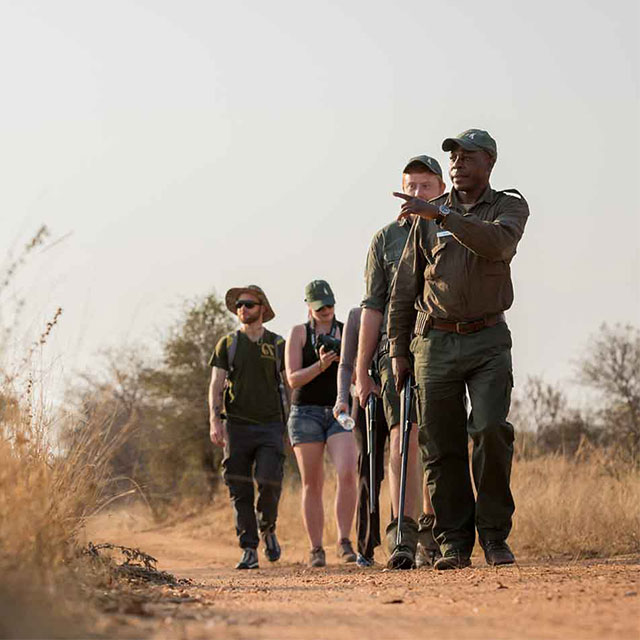
Owner and Tour Director
Clive was born and raised in South Africa. He has more than a decade of experience as a safari guide at several lodges throughout the Greater Kruger area. Clive guided guests from all over the world during his guiding career and really enjoys sharing his passion and knowledge of the South African Savanna with others. Clive has attained his FGASA level 2 qualification (Advanced Field Guide) and has a love for the remarkable wildlife and environment that is unique to South Africa and Victoria Falls, Zimbabwe.
Clive met Savanna's mom while she was on safari in South Africa. With her background in biology as well as a master's in ecology, there was an immediate connection as the two share a common love for animals and their natural environment. Clive and Savanna now live in Ocean City, New Jersey in the United States.
Travel With Us
Savanna Safaris specializes in small group safaris so that each traveler gets a personalized and intimate safari experience. With no more than 8 guests per scheduled tour, this is ideal for families, friends, couples, and solo travelers.
South African Safari Awards

Birds on safari: 10 most common African birds in the savanna
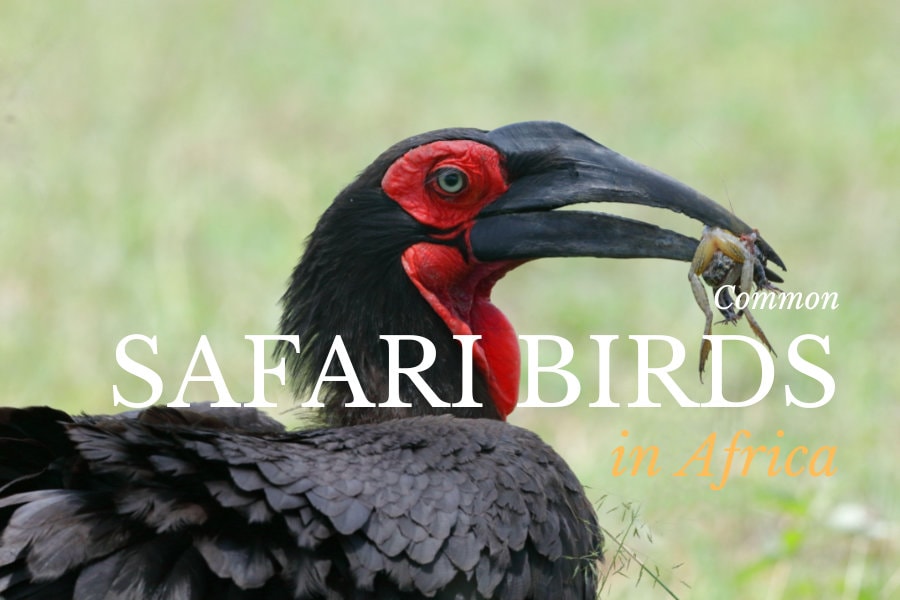
Most people don’t even consider seeing birds on safaris when planning their adventure in the wild.
Anyone who is planning a safari dreams of watching lions protect their territory, elephants charging through the forest, or a big cat hunt playing out beside a hippo-filled waterhole.
Unless you’re an avid birder, there’s a good chance that our winged friends aren’t very high on your agenda.
Despite their beauty and extravagance , the majority of people don’t find birds as exciting as the big stuff – most are more interested in wild dogs, cheetahs or leopards , among others.
However, witnessing birds on safari is always an unexpected highlight. This article shows you the top ten : classic species, what they sound like, and where you can encounter them.
If you’re already excited about birds on safari, then this article is an introduction to what you can find.
And if you’re thinking “birds in safari itineraries?” then this should change your opinion a little.
10 Common Safari Birds to See in the Savanna
Whether you’re hoping to spot small or giant African birds, safaris offer abundant opportunities to marvel at these stunning creatures.
Here are some incredible species to add to your birding bucket list.
1. African fish eagle

Undoubtedly Africa’s most striking symbol, and Zambia ’s national emblem, this is the ultimate bird to see on safari.
If you haven’t already guessed it by the name, their diet mainly includes fish . So you’ll likely find these large African birds near open water bodies .
The fish eagle is unmistakable with its white head and breast, chestnut belly and forewings, black under-wings, and white tail.
Male and female appear similar, but the female is generally larger .
Average size : 2.1-3.6 kg; 63-77 cm in length.
Call : Loud, piercing, cheerful yelp. ‘Kyow-kow-kow’ type. 🙂
Habitat : Aquatic: rivers, lakes, and dams – feeds on fish.
Range : Sub-Saharan Africa.
2. Helmeted guineafowl
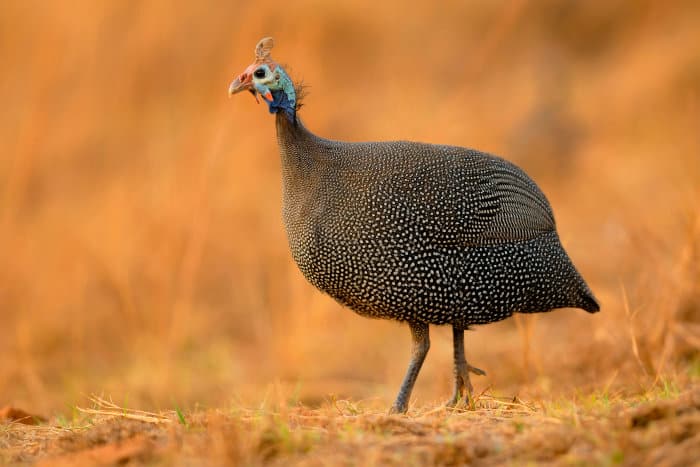
Not the most intelligent of creatures, but it is intriguing nonetheless. They are one of the most unique birds of the savanna, with several quirky traits.
The helmeted guineafowl has a ‘bead-like’ design with dark gray feathers and tiny white dots.
They boast bald faces and necks with striking blue-colored skin . Admittedly, they’re not at the top of the list of beautiful African birds .
Both helmeted guineafowl sexes have a casque on the head, though the male’s “helmet” is longer.
These guineafowls have an omnivorous diet , and while they can fly, they choose to walk unless they find themselves in danger.
Average size : 1.3 kg; 53-58 cm in length.
Call : ‘krrdii-krrdii-krrdii-krrdii’ .
Impressive, huh? Who would’ve thought in the first place that I, “Africa Freak” , could speak guineafowl language? 🙂
Disclosure – I’ve spent many mornings watching them roam outside my safari camp.
Habitat : All types of open and wooded grasslands + coastal forests.
Range : Most of Sub-Saharan Africa, except in rainforests and the Somali region.
3. Grey (southern) crowned crane
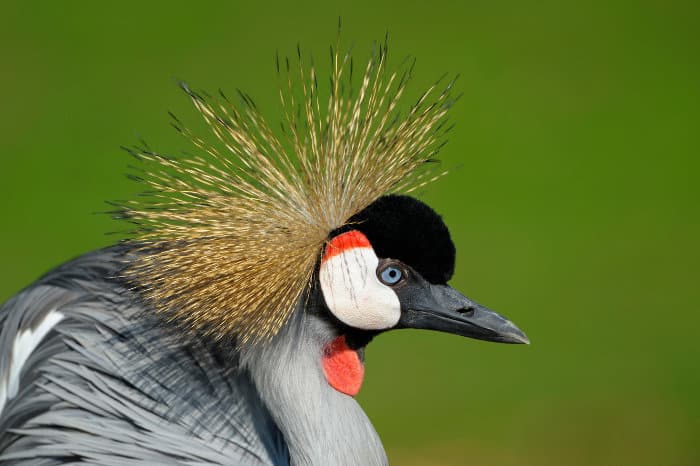
Highly characteristic of its stunning bristly crown , the grey crowned crane is a majestic bird. Safari goers wouldn’t want to miss the opportunity to catch a glimpse of this beauty.
You can find them in grassland and wetland areas in Africa. Unfortunately, the grey-crowned crane is an endangered species with a declining population.
They face threats such as the illegal removal of birds from the wild and habitat loss.
Average size : 3.5 kg; 100-110 cm in length.
Call : Trumpeting ‘may hem’ flight call (easily confused with the Norwegian black metal band).
Habitat : Grasslands, flooded plains, marshes, and agricultural land.
Range : Most of Eastern and Southern Africa.
4. Lilac-breasted roller
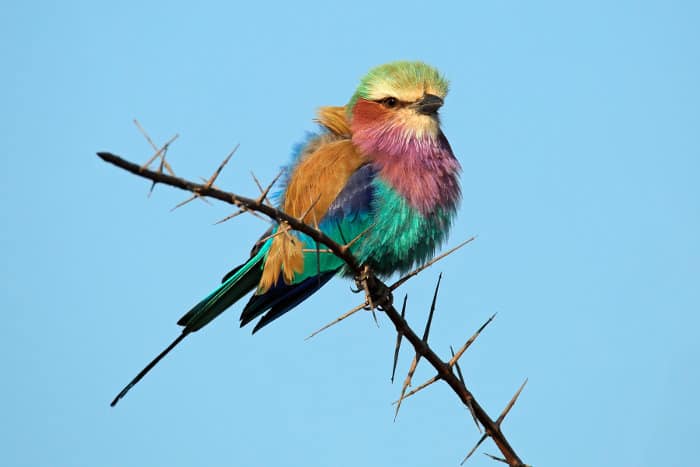
A stunningly exquisite bird that you are most likely to encounter during a game drive. “Rolls” are on display and explode into a myriad of colors when giving chase.
The lilac-breasted roller is a multicolored beauty of the roller family. Many are familiar with birds from this family for their ability to perform aerial acrobatics in flight.
Lilac-breasted rollers can breed in flight too, and they are monogamous birds believed to mate for life.
If you’re patient enough when having a picnic, say on the Serengeti , this bird may perch on your safari vehicle.
For those hoping to catch sight of birds in Kenya, safari experiences should include searching for this fascinating species.
Average size : 110 g; 36-38 cm in length.
Call : A loud guttural rak-rak sound.
Habitat : Grasslands and wooded acacia savannas . The lilac-breasted roller perches conspicuously and habitually on termite mounds, high treetops, or telephone wires from where it scans the ground for large insects.
Range : The bird’s range coincides with the great wildlife corridors of Eastern and Southern Africa.
5. Southern ground hornbill
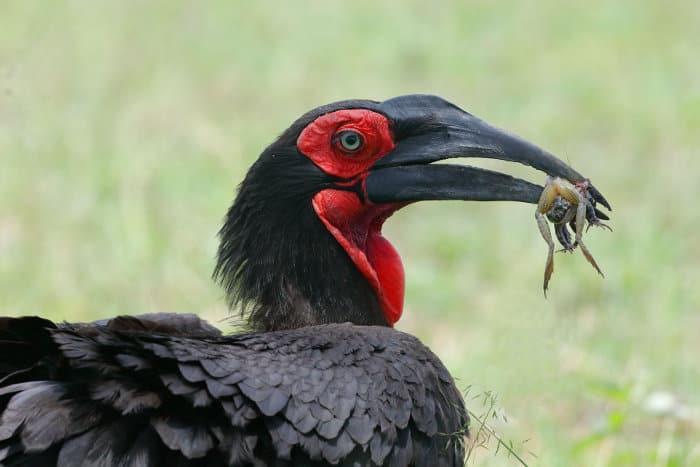
These are the turkey birds of the savannah. With its jet-black feathers and vibrant red patches , the southern ground hornbill looks a little like a turkey or vulture.
You can distinguish the female from the male, thanks to its blue throat patch .
Not necessarily a looker, but you know you are on safari when a southern ground hornbill makes an appearance.
Average size : 3.8 kg; 100 cm in length.
Call : A loud, booming duet ‘oomph-oomph,’ given on early mornings.
Habitat : Savanna, woodlands, and grasslands.
Range : Central Kenya and Southern Congo, south to Central Botswana and Eastern South Africa .
6. African hoopoe
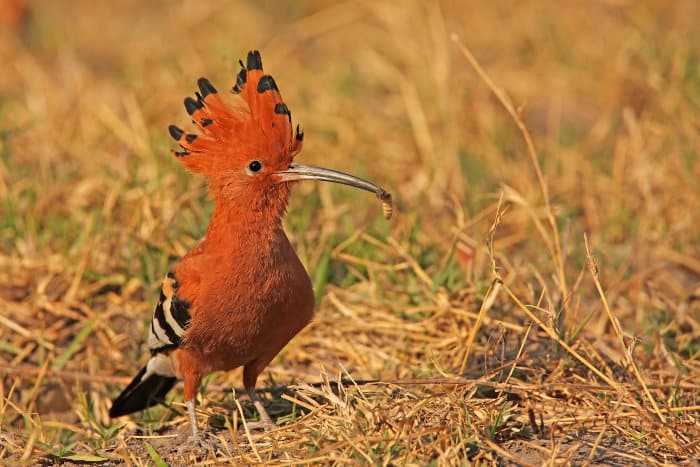
The African hoopoe is a medium-sized bird that flies impressively, like a giant butterfly with pied wings. It is one of the only African bird species with a “punk-like” crest and a long decurved bill.
These funky, exotic-looking birds of Africa mainly feed on insects like beetles, locusts, and grasshoppers. They have a few natural predators, including cats and big African birds, such as hawks and eagles .
The African hoopoe is one of the top species to see on safari for bird lovers.
Average size : 38-67 g; 25-29 cm in length.
Call : A frequently uttered ‘hoop-hoop-hoop’ .
Habitat : Wooded savannas, open parklands, and suburbs. We used to have a few of them visiting our garden in Johannesburg.
African hoopoes are very funny little birds that walk at a fast pace, probing the soil with their extended bill.
Range : Found throughout Africa.

The world’s largest and heaviest bird and the only one with just two toes. You might already know that ostriches lay large eggs, but did you know that they have three stomachs?
Another interesting fact about these big birds in Africa is that they have no teeth . Instead, they swallow pebbles to help with grinding food for easier digestion.
Common ostriches are flightless . However, they are also one of the world’s fastest animals .
Males are black with white wings , while females are dull brown with “dirty” white wings.
Sorry ladies, but in the animal kingdom, males are usually more attractive than females.
Average size : 63-140 kg; 1.7-2.8 m tall.
Call : Habitually heard at night or when displaying; a loud booming call, ‘boo-boo-booo-hooo’ (sounds like a cry when you write it down).
Believe it or not, the noise itself is very similar to the roar of a lion . Scaaary!
Ostriches can also whistle .
Habitat : Open semi-arid plains and woodlands.
Range : Southern edge of the Sahara and Sahel, and through much of East Africa. Southern races are also widespread, especially in farming areas where farmers raise them for their eggs, feathers, meat, and skin.
Oudtshoorn in South Africa is the ostrich capital, home to over half the world’s ostrich products.
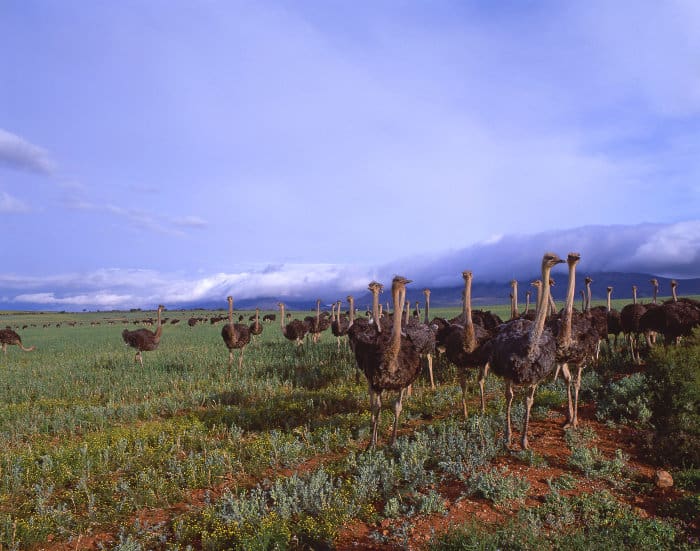
Did you know?
A single ostrich egg can provide an omelet for at least 10 people (or 12 moderate eaters).
Bon appétit!
8. Marabou Stork
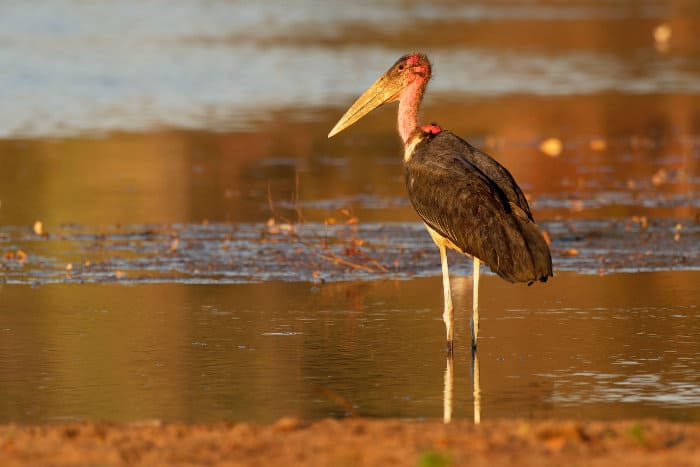
Birds don’t always come to mind when you think of ugly African animals . However, the enormous marabou stork isn’t the front runner when it comes to beauty.
They have featherless heads , scabby pink faces and a long reddish throat sac .
These large African birds have cloak-like feathers on their bodies, giving an eery appearance. It is a true scavenger that cleans out carcasses in search of bits and pieces of meat.
The marabou stork is frequently associated with African vultures but is quite different in behavior.
They can be scary .
One Africa Freak contributor used to come home to marabous picking the scraps off his verandah in Lake Naivasha , Kenya.
Average size : 4.5-8 kg; 1.2-1.3 m in length.
Call : Primarily silent, but can clap its beak during display.
Habitat : Mainly savannas and plains in the wild. They are also becoming present in towns: around dumps, fish markets, or abattoirs.
Range : From Senegal to Natal (South Africa); avoids rainforests and deserts.
9. (African) white-backed vulture

The white-backed vulture is Africa’s most widespread large vulture known as the “ garbage man ” of the savannah.
Often confused with the Cape vulture , the white-backed vulture is smaller in size and has a dark eye (Cape vultures have honey-colored eyes). Sadly, these endangered birds of Africa have a declining population .
Average size : 4.2-7.2 kg; 78-98 cm in length.
Call : Grunts and goose-like hisses and cackles .
Habitat : Open plains and wooded country where game is abundant.
Range : West Africa, Kenya, Tanzania , and throughout Southern Africa.
10. Red-billed oxpecker

The appointed beautician of the African bushveld .
The red-billed oxpecker has captivating yellow-ringed eyes that contrast with its olive-brown plumage. It is a medium-sized bird very similar to the yellow-billed oxpecker but with an all-red bill.
Red-billed oxpeckers are fairly common birds in Africa that you might spot enjoying a piggyback ride on other animals.
It is commonly mixed with large mammals ( buffalo , rhino , hippo ), as it removes unwanted parasites such as ticks and flies from the host’s body.
In fact, the red-billed oxpecker will clean the animal’s body thoroughly, even parts such as ears and nostrils.
It’s quite a spectacle to watch!
Average size : 0.5 kg; 20 cm in length.
Call : A scolding ‘churrrr’ and a hissing ‘zzzzzzist.’
Habitat : Savanna, in close proximity to cattle and game.
Range : Eritrea south through Eastern Africa to Eastern South Africa.
Admire African Savanna Birds on a Safari
These ten safari birds are relatively common and widespread. They are just an introduction , though.
To see many more small and big African birds, you should visit Africa and connect with your wild side.
Remember, you can customize safaris to your interests. So if you want to see birds in the African savanna, then tell your safari operator , so they can go searching for rare species.
About The Author
Michael Theys
Related posts.

17 fun lilac-breasted roller facts: Africa’s multicolored bird

9 cool African grey parrot facts
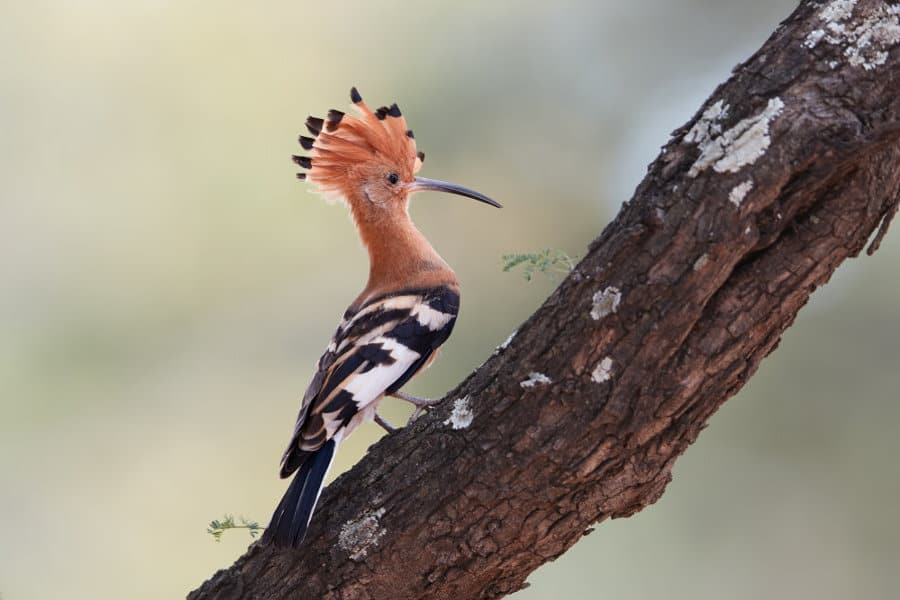
African hoopoe – Interesting facts on the striking Upupa africana species
Leave a comment cancel reply.
Your email address will not be published. Required fields are marked *
"Robert Ruark on Buffalo. He looks like he hates you personally. He looks like you owe him money. He looks like he is hunting you." Robert Ruark Horn of the hunter
Africa Savannah Safaris is a family owned and operated Safari Company, committed to become a leading service provider to people passionate about experiencing nature first hand. We are committed in pursuing the essence of hunting and our promise to you our customer, is exceptional service delivery by every member of our team.
"In a civilised and cultivated country wild animals only continue to exist at all when preserved by sportsmen." Theodore Roosevelt US President
We pride ourselves in helping many hunters to fulfil their African hunting dreams. Between us we have over sixty years of experience, this includes rifle hunting, wing shooting and bow hunting. We have hunted South Africa extensively and in partnership with reputable owners and concession holders offer hunting in Namibia, Zimbabwe, Tanzania and Botswana as well.
Trusted Industry Outfitters
The ultimate african experience, years of experience in the field.
Bespoke Packages
We offer many options to your ultimate Hunting experience

Customized Safaris
This is the full custom deal where the duration of the hunt and the selection of trophies are determined by yourself. The hunting area can also be chosen to suit your needs and requirements or could be selected in consultation with our professional staff. The focus when opting for this option is to secure the best possible trophies of the selected species.
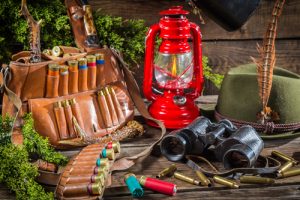
Hunting Packages
Packages generally include the daily rates as well as trophy prices for the selection of game to be hunted. The focus when we create these package deals is to offer value for money. Subject to availability, additional animals can be added to the list as per our price list.

Dangerous Game Safaris
Also known as the “Big five” these animals offer the most exhilarating hunting experience on earth. Hunting one of the dangerous game species is an absolute must and should be on every avid hunters “ultimate bucket list”.

Photographic Safaris
The extensive knowledge on wildlife, local game reserves and tourist attractions makes our guides the perfect choice should you prefer to visit Southern Africa on a Photographic Safari.

Management Hunts
The are sometimes available towards the end of a hunting season. This is normally part of the cull. Please note that trophies from these hunts are not available for export. Prices and costs available on request.

Special Offers
The aim of our Offers is to provide exceptional value for money. As can be understood, availability will be very limited. Our specials can be viewed on our
Select your Area to hunt

South Africa

Etosha National Park

Selous Wilderness
Our Testimonials
Client feedback
The purpose of this letter is to provide a positive referral in relation to Mr. Turner Wilkinson (Professional Hunter and Outfitter with Africa Savannah Safari’s) personal and work ethic. I have known Turner for a couple of years having met him through his guiding service in South Africa. We have since interacted on a personal level and kept in touch. Mr. Wilkinson is an upstanding citizen and has the high degree of ethics that are required in his line of business. I know this for certain through the interactions that are required to maintain his license and permits associated with his guiding service. I will vouch for Mr. Wilkinson’s character and dependability as well has his ties to his home business, family and work in South Africa.

I liked the PH's attention to details in camp. Thy have a vast knowledge of the areas they hunt as well as the beautiful animals they put me onto. They have huge respect for the animals we hunted, all the creatures and plants (of which they have very good knowledge) in the ecosystem, and for me as a client. I've enjoyed it so much that I've already booked another two hunts with them. The first I'm taking 5 friends and the second I'm taking my two sons. That the hunt couldn't go on for longer, as I had get back home.

We hunted a scenic location with a high concentration of a variety of bird species. Louis, my Professional Hunter, was born and raised in South Africa and was very knowledgeable about the birds we hunted, as well as the other species we observed. It was fun to learn from him. The Spurwing Geese are deceptively fast. They are very large, heavy bodied birds and are fun to hunt. We also hunted Egyptian Geese, Guinea Fowl and Rock Pigeons, but for me, the Egyptian Geese made my trip. I had been wanting to hunt them for more than 20 years and they did not disappoint me. The day was too short! If you enjoy bird hunting, plan for multiple days!

Pricelist LW 2024
- Share on Facebook
- Share on WhatsApp
- Share on Email
Privacy Policy
Call or WhatsApp: international: +255 755 849 094 | Europe: +351 912364040

A Complete Guide to African Savanna Plants
The African savanna is an environment unlike any other on earth. The approximately 5 million square miles that make up the savannas are rich in biodiversity that can’t be found anywhere else on the planet. The cornerstone of all the life it hosts is its almost miraculous abundance of plant life.
The region is characterized by its rolling expanses of grasslands, patches of heavy brush, and the few, lonesome trees dotting the horizon. These African savanna plants are all uniquely adapted to their often-inhospitable conditions, often resorting to fascinating strategies to survive
Challenges of the Savanna
By far the greatest challenge facing any life on the savanna is the inconsistent rain patterns.
Depending on the region, the savanna can receive between 20 and 50 inches of rainfall annually. While that seems like plenty, it all takes place in only a six-to-eight-month period . The rest of the year, the grasslands are almost completely dry.
Worse, some regions receive as little as six inches of rainfall, making them little more hospitable than deserts. In Tanzania, there are basically two separate wet seasons , with a gap of about two months between them.
The challenges this irregularity presents go beyond water alternating between abundant and nonexistent. Conditions get so arid during the dry seasons that regular brush fires are just part and parcel for life on the savanna. Plants that live in the savanna need novel adaptions to survive and thrive in these conditions.
Survival Strategies
Because the soil on the savanna is extremely porous, water will readily drain from the surface, requiring plants to delve deep into the earth to get it. These deep root systems allow plants to store excess water away from the hot summer sun.
They also provide a defense against drought, wildfires, and grazing animals. With the root systems intact, the plant can regrow during the next wet season. For this reason, many grass species simply go dormant as soon as the wet season ends.
More complex plants like trees don’t have the ability to hibernate, however. Many of them instead survive by way of more unique adaptations. Many develop specialized organs like bulbs and corms in which to store water for the dry times.
Other trees have special reservoirs for water between their bark and internal structures. Some even grow special bark that acts as a fire retardant in the event of a brush fire.
And then, of course, there is a prediction by herbivores. Savanna plants provide food for more than 40 species of mammals. With that many grazing animals, plants have to develop defensive strategies to survive.
Many cover themselves with thick spines and barbs to deter potential grazers. Others produce chemicals that make themselves taste terrible. And a few even form symbiotic relationships with ants that come out and attack potential threats.
Among all this plant life, there are a few particular species that stick out.
Notable African Savanna Plants
Acacia tree.
One of the rare trees to thrive in the savanna, the acacia is one of the most iconic sights in the grasslands. It is also the favored food source of giraffes. It is not uncommon to see a herd of giraffes all gathered around one tree, greedily chowing down.
Their fondness for the acacia has led to something of an evolutionary arms race between the two species. To deter feeding, so species of tree grow thorns as long as 4 inches and as sharp as a knife. To counter this, giraffes evolved an incredibly flexible prehensile tongue that allows them to navigate safely through the brambles.
The trees responded by developing the ability to release tannins in response to injury. The chemicals taste terrible to giraffes and are mildly toxic to them. They even send out chemical signals to nearby trees, warning them to do the same.
This toxic defense forces the giraffes to keep moving upwind, looking for trees that have not yet gotten the memo.
Baobab Tree
Another iconic sight on the savanna is the baobab tree. It’s often simply called “the upside-down tree”, as it resembles a tree that has been ripped out of the earth and replanted upside-down.
These trees can grow to immense sizes and can live to be thousands of years old . One hollowed-out baobab is so large that up to 40 people can take shelter inside at once.
They’re an incredibly hardy tree. Their trunks are composed of a thick, cork-like substance that allows them to store water for months and is extremely fire resistant. Even if it is somehow burnt or stripped of its bark, the baobab will simply grow all-new bark and carry on like nothing happened.
Candelabra Tree
Another very curious tree found in the savanna is the candelabra tree. It takes its name from the fact all of its branches grow more-or-less straight up out of its trunk, giving it the vague appearance of a candelabra.
Though these 40-foot tall trees are quite something to look at, it is another instance where you will want to keep your distance. These trees secrete several potent toxins. The white sap found inside the tree will cause burning blisters on the skin and will cause blinding if it gets into the eyes.
And instead of growing leaves, it grows cactus-like spines. Its spines are coated in a similarly toxic, latex-like substance. Because of these defensive measures, dwarf versions of the tree are sometimes used as a sort of living fence to deter wild animals.
Elephant Grass
Growing in the more fertile soils, elephant grass is a common sight near waterways in the savanna. You can’t miss it. It grows in dense clumps that can get up to ten feet tall.
Traditionally cut by farmers to be used as livestock feed, it has recently proven useful in pest management techniques. As it grows readily and is attractive to pests that cause yield loss, it is useful for drawing pest away from valuable crops. The technique is cheaper, easier, and more sustainable than pesticide use.
They also naturally enrich the soil, making them a boon to farmers.
Jackal Berry Tree
The jackal berry tree is most often found growing alongside the termite mounds that dot the savanna.
They maintain a symbiotic relationship with termite colonies. The termites provide the trees with moisture and they aerated soil they need, and the roots of the trees provide shelter for the colony. Though termites tend not to eat living wood anyways, cut jackal berry wood seems to demonstrate a degree of termite resistance.
The trees can grow up to 80 feet tall with a trunk circumference of 16 feet, making them quite easy to spot. The trunks grow straight up, with branches only spreading out a considerable distance off the ground. They have a dense crown with large, deep green leaves.
The fruit is a favorite of many savanna animals, including kukus, nyalas, impalas, warthogs, baboons, parrots, and hornbills. The leaves are eaten by elephants, rhinos, giraffes, buffaloes, and kudus, and emperor butterflies often lay their eyes among the branches.
The fruit can be eaten as-is, dried and ground into flour, or used in the brewing of beer and brandy. And the wood, beyond being nearly termite-proof, is extremely hard and durable. The heartwood is used to make high-quality floors and furnishings, and the trunks are sometimes hollowed-out to build canoes.
Whistling Thorn
A member of the acacia family, the whistling thorn tree is more-or-less unique to Tanzania. Like it’s more common relative, it defends itself from predation with sets of long sharp spines.
These spines are the source of its common name. As the spines grow old, they die and become hollow. When the wind blows, these old spines act almost like flutes, whistling in time to the breeze.
In addition to its musical defense, the whistling thorn has another nasty surprise. The tree produces small, swollen growths that are hollow on the inside. These growths can host up to four different species of stinging ants.
It is thought that the relationship might be symbiotic in nature. Most acacias produce toxic chemicals to ward off insects. But the whistling thorn seems to welcome the colonies.
Ants struggle to nest in the savanna. The earth is too damp and spongy during the rainy season, and it dries out and cracks during the dry season. It seems that in return for shelter, they defend the trees as that home.
When they detect an intruder, the swarm out and attack. Giraffes and other grazers seem to be able to sense the pheromones the ants give off and leave the trees alone.
It’s a fascinating relationship, though probably one better appreciated at a distance.
A Vibrant Tapestry of Life
The savanna’s awe-inspiring nature should land it a place on anyone’s bucket list . With the high degree of specialization in these African savanna plants, every element has a part to play. A cluster of grass is just as important to the ecosystem as the pride of lions.
A Tanzania safari is an opportunity to see the awesome machinery of nature at work. For more information on how to arrange your journey, please contact us .
Share This Story!

USEFUL LINKS
About Us Customer Reviews Tanzani Safaris & Tours Travel Blog Terms and Conditions Contact Us
COVID-19 update
EXPERIENCES
Honeymoon Safari Hot Air Balloon Great Migration Cultural Tourism
Tanzania & Zanzibar High-End Cultural Safari & Zanzibar Best of East Africa Lions of Serengeti Serengeti Premium Safari
DESTINATIONS
Tanzania Kenya Rwanda Uganda
Serengeti Zanzibar Kilimanjaro Ngorongoro Crater Tarangire Lake Manyara Selous Ruaha
Office +255 768 893 230
Safari Inquiries +255 755 849 094
2nd Floor, Saba General Building, Namanga Road PO. Box 16353, Arusha, Tanzania.
Follow us on
Facebook Instagram Twitter LinkedIn Pinterest Tripadvisor
© Copyright 2024 Earthlife Expeditions , All Rights Reserved. | Web by Spike
We Accept | Master Card | Visa Card | Wire Transfer
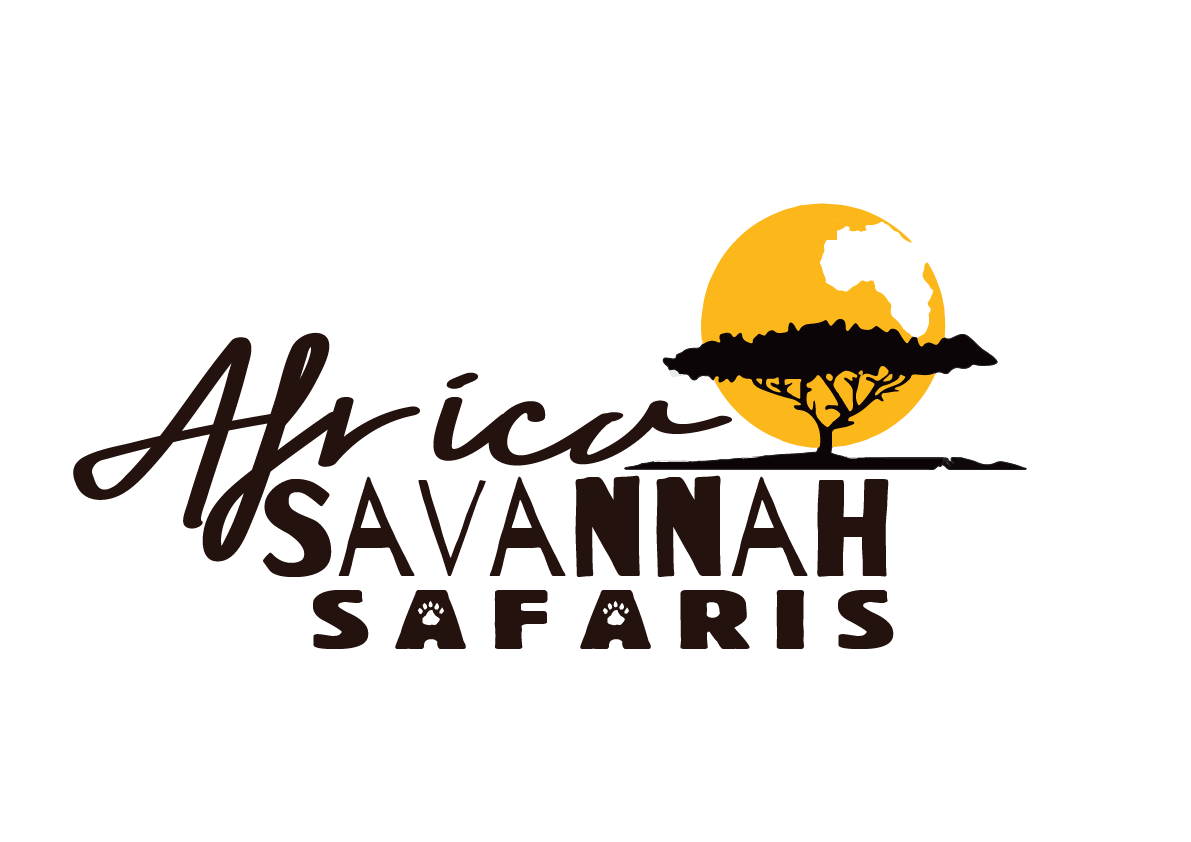
Explore The Beautiful Tanzania Destinations
Africa savannah safari, discover tanzania best destinations.
We stay above the rest for traditional safaris in Tanzania and real adventures.
Together, we can design the ideal itinerary specifically for you.
nobody knows Tanzania better than we do. Your journey will be unlike any other thanks to our carefully chosen, knowledgeable tour guides. We certainly know to be at the right place at the right time, from the rocky terrain of Southern Tanzania’s parks like the Ruaha National Park and the legendary Selous Game Reserve to the world-famous Ngorongoro Crater and the neighbouring endless plains of the Serengeti National Park, where the great wildebeest migration takes centre stage.
Tanzania offers more than just safaris. This stunning nation in East Africa is endowed with diverse cultures like the Maasai and Hadzabe Bushmen as well as world-class attractions. Mount Kilimanjaro, the tallest free-standing mountain in the world and the highest point on the entire African continent, is located in Tanzania. The Zanzibar Islands, which border the Indian Ocean and have pristine sandy beaches and breathtaking views, must be visited if you are in Tanzania.
Why Travel With Africa Savannah Safaris?
Destination experts.
Relax-We know Africa, we know Tanzania, You're in the Safe hands
Custom Itineraries
Tailor-made for you, we make your Lifetime Dream Safari come True
Expert Advice 24/7
With you, Every Step of the Way from A-Z,our results're Amazing
Every one deserves a classic safari, we listen and provide the best Price
Safari Holidays in Tanzania
A safari in tanzania reveals the world’s premier safari destination.
Tanzania offers travelers the opportunity to experience firsthand the Maasai culture, amazing animal viewing, and epic ascents up Mount Kilimanjaro, Africa’s largest free-standing mountain. Add a few days on the beaches of Zanzibar and you are in for a truly magical African adventure. Contact us to get free personalized Tanzania safari holidays designed by our Africa experts.
- 2-Days Tanzania Safari Experience
Trip Overview 2 days in a lodge in Tanzania You’ll visit Tarangire and the Ngorongoro…

- 3-Day Tanzania Big Five Safari
Trip Overview Start and finish in Arusha! The Wildlife Tour 3-Day Serengeti & Ngorongoro Crater…

8-Day Serengeti Great Migration Safari
Trip Overview Start and finish in Arusha! With the 8-day tour package Great Migration Safari:…
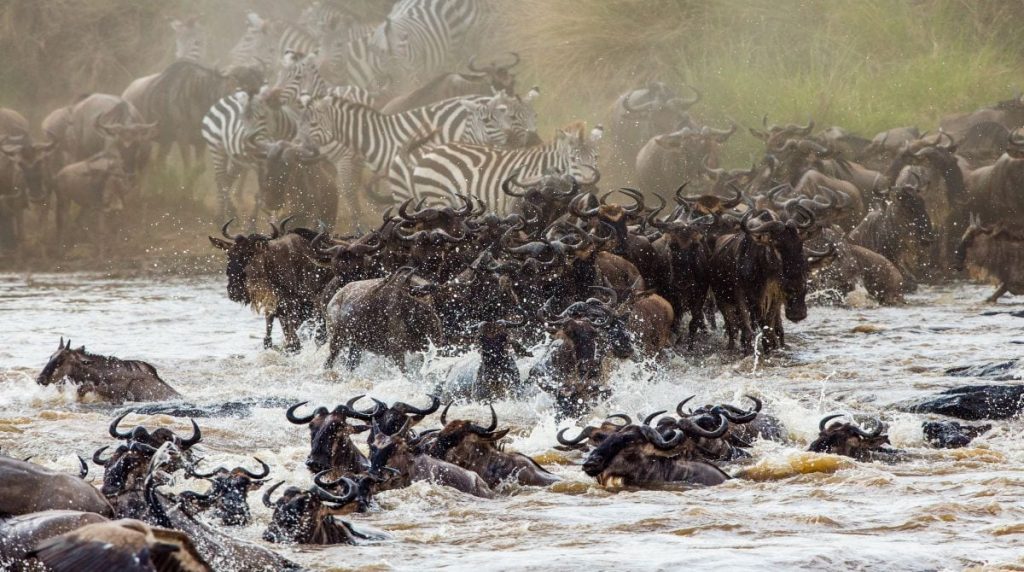
- 5-Day Tanzania Family Safari
Trip Overview For visitors who want to sample a taste of Africa in Tanzania for…

- 6-Day Majestic Tanzania Safari
Trip Overview Start and end in Arusha! With the Wildlife tour 6-Day Majestic Tanzania –…

TANZANIA POPULAR DESTINATIONS
Your wonderful travel has just begun..
Tanzania’s safari destinations are some of the best in Africa. They are the iconic African safari destinations that nature lovers and African safari enthusiasts still dream of today. And, none more so than Serengeti Park.
Africa Savannah Safaris
Get the best deal today, - discover your inspiration and allow us to create your ideal safari.
Experiences
- Family Safaris
- Luxury Safaris
- Camping Safaris
- Wildlife Safaris
Destinations
- Arusha National Park
- Ngorongoro Conservation Area
- Lake Manyara National Park
- Serengeti National Park
- Terms & Conditions
- 2022 Africa Savannah Safaris. All right reserved.
- Crafted By Timeless International

An African Safari Changed My View of the World
In the Shondaland series The Novelty of Nature , we’re digging into the power of natural places and the wellness benefits of embracing the elements. From camping tips and safari stories to eye-opening tales about the environment to inspiring ways to reclaim your relationship with nature, these stories show it’s never been a better time to get lost in the great outdoors.
A rustling outside my canvas tent in a remote part of Kenya’s Ol Pejeta Conservancy jolted me out of my jet-lagged daze. Opening the zipper, I scanned the expansive bush and realized I wasn’t alone. Quietly, I walked toward the barbed wire fence along the edge of an embankment leading to the reddish-brown waters of the narrow Ewaso Ng’iro River. There, knee-deep in the muddy water, stood an adolescent African elephant, 30 or so feet in the distance, completely oblivious to me.
Flapping his giant ears to keep cool, the elephant snaked his nimble trunk around the branches to feast. I let out a gasp; my first instinct was to capture the moment on camera. But I reminded myself to be mindful of this solitude in the wilderness in the presence of such a mighty creature. I stashed my phone away and stood there transfixed, lulled by the cool woodland breeze and warmed by the equatorial sun until the animal moved on. My body relaxed, my worries dissolved, and for a short period, my mind was still enough to be at peace.
Enrapturing experiences like this make a safari thrilling and unforgettable. My introduction to African wildlife came when I was a teenager growing up in a small town in South India. My aunt, who moved to the continent after getting married, mailed photos from a vacation in South Africa. A towering giraffe stood in a grassland near the vehicle, its mahogany patches contrasting against a cloudless, baby-blue sky. The image was etched in my memory.
Ten years later, while living in California after graduating college, I got the chance to go on my own safari. A friend who was on an extended volunteer trip in a rural community along the shores of Tanzania’s Lake Victoria invited me and two other girlfriends to visit. In just a few months, I received the necessary vaccination shots and was on my way with a backpack and nearly empty bank account. The word “safari” translates to “journey” in Swahili; I didn’t realize then that the moment I stepped on African soil would forever change my life.
Two flights to Nairobi and a 12-hour overnight bumpy bus ride to Mwanza later, the four of us arrived exhausted but excited for the adventure ahead. We hired a safari guide and vehicle for a multiday girls’ trip. Our first stop was the Serengeti, the famed national park famous for the greatest spectacle on Earth — the wildebeest migration — where millions of ungulates make the grueling journey across the plains and rivers in the dry season in search of food.
We drove for hours, with the same barren plains passing us by, our hair, faces, and arms covered in dust from the open windows. The scenery changed as we approached the migration. The grayish-brown bodies of the wildebeests, with their black manes stirring, moved like an undulating wave across the endless plains.
While they trudged along, we scanned the savanna for wild cat action, as the migration was prime hunting season. Finally, we spotted a leopard, camouflaged in the tall grass and acacia trees, stalking its prey. My heart rate quickened; I remember standing on the seat and poking my head out of the pop-top roof for a better view. The scene in front of me seemed straight out of a Discovery Channel nature show, and I expected music signifying an impending kill to come on any minute. Alas, there was no dramatic soundtrack, and the leopard slinked off into the grasses with nary any action.
That night, no matter how much I prepared mentally, I wasn’t ready for camping out in the middle of the wilderness. At a campground called Simba Camp on the rim of Ngorongoro Crater in northern Tanzania, the four of us pitched our tent under an imposing tree. The area is part of the Ngorongoro Conservation Area and has the distinction of being the largest unbroken caldera in the world.
After a dinner prepared over a campfire, we piled into our small tent and slipped into our sleeping bags, with just a thin material shielding us from the dangerous bush. Throwing on all the warm clothes we brought, we huddled, fighting the chill that descended soon after the sunset. But the cold wasn’t the only thing that kept us up that night. The shrieks and squeals of hyenas right outside the tent haunted us, ensuring none of us got a wink of sleep. We learned the next morning that it isn’t uncommon for lions and elephants to venture into the camp. After all, we were in their world, cocooned in relative safety, as there was plenty of meaty prey around for predators to stay away from humans.
We headed down the slope of the Ngorongoro Crater. With encircling walls higher than the Empire State Building, the crater is blessed with dense evergreen montane forests, open moors, and grasslands. This Eden is home to the Big Five — elephants, lions, leopards, buffaloes, black rhinos — and other animals, all coexisting in a 102-square-mile area. With barely any other vehicles around, we took our time to stop and spot wildlife, and drove toward the seemingly alien-planet landscape of Lake Magadi, a saline soda lake that attracts hundreds of flamingos who inhabit the shallow saline soda lake. The highlight of the game drive, though, was seeing the endangered black rhino, an animal who eluded us in the Serengeti, where poaching decimated their population.
As we drove up, the setting sun cast a warm glow on the canopy, and brilliant golden rays went in different directions. Underneath, two mating elephants, with their trunks intertwined, playfully wrestled. On this hopeful and adventurous journey, a seed was planted. I became enamored with wildlife, and a desire to protect them took root. This led to a career in writing with a focus on conservation, in which I hoped to inspire others to have similar adventures and protect nature.
Covid put an abrupt end to my traveling days, confining me at home like the majority of the population. The turmoil was made worse by a traumatic event in my family. I was barely hanging onto hope; normalcy seemed like a distant memory, and getting on a plane was a scary proposition.
It was during this long, reflective time that it occurred to me that the most joyful times are when I am living in the moment in pristine wild places. Untouched areas that take me back to another era, where ancient trees like baobabs stand proud, where virgin rainforests, acacia woodlands, and savanna grasses remain havens for wild animals who roam freely as they have for thousands of years. Nowhere on the planet is this more evident than in the protected places in several African countries.
I was dismayed to learn that the pandemic deeply affected communities and halted many conservation efforts. With both tourism income and boots on the ground gone, poaching increased in certain hot spots. It was then I found a new purpose of not merely fulfilling my desire to be immersed in nature but to also do what I could to help. As soon as I was vaccinated, I boarded a flight back to Nairobi, almost 20 years after that fateful journey.
This time, I didn’t sleep on the ground or drive for endless hours. On my first stop in Kenya’s Mara Naboisho Conservancy in the Masai Mara reserve, a community-owned protected land home to abundant wildlife, I upgraded to a tent with canvas walls, a plush bed, and a bathroom with hot showers. I dined on gourmet food overlooking the savanna. I went on twice-daily game drives in an open-air vehicle, snapped photos of the sunrise, and learned about animal tracking on a walking safari. Most rewardingly, I met with the women at a local organization helping uplift women through beadwork.
I continued on to two different camps in the Serengeti, one that is run entirely by women and another in a recently opened conservation area called Namiri Plains, where efforts have resulted in an increase in the cheetah population. On each of my outings at these camps, I brought a notepad and camera in my day bag, a heart full of fresh hope, and a bubbling hankering to share my experiences with others once again.
My outings opened my eyes to the fact that a safari is more than just the Big Five or the African Great Migration. And no game drive is ever the same. One day, it was lions and their cubs feasting on a zebra as jackals and vultures waited their turns, young hyena pups playing near a den, and hundreds of gazelles and impalas grazing and jumping.
On another day, an elephant in musth blocked the way, two cheetah brothers wandered along a drying river in pursuit of their next meal, adorable vervet monkeys groomed each other along the sides of the road, and a male lion roared so close to the vehicle that I felt it in my bones. Birds including ostriches, marabou storks, kori bustards that look like descendants of dinosaurs, and stunning beauties like African fish eagles and lilac-breasted rollers filled up my memory card.
I returned to the continent a few more times to experience its diverse regions, hiking the rain-forested slopes of the Virunga Mountains in Rwanda’s Volcanoes National Park to come face-to-face with endangered mountain gorillas and learn about conservation successes; witnessing anti-poaching guide dogs in training in Akagera National Park; and venturing on solar-powered boat rides to catch sightings of Nile crocodiles, hippos, and herds of elephants along the Chobe River in Botswana with a female guide to report on equity, sustainability, and conservation.
Back at Ol Pejeta Conservancy the day after my elephant encounter, I knew exactly who I was going to see, as I was scheduled to meet Najin and Fatu, the last two remaining northern white rhinos in the world. The two females, who belong to a subspecies of the white rhinoceros, live in a large enclosure with a southern white rhino, under 24-7 armed protection against poachers. Their predecessors roamed the savanna grasslands and woodlands of East and Central Africa. The species is extinct in the wild.
Enticed with a snack, mom Najin walked toward me like an armored vehicle and stuck her horn the size of my forearm into the window. With her massive stature, compared to the four-wheeler I was sitting in, she stood mere inches from me. With my heart pounding and overflowing with joy, I handed her a carrot that quickly disappeared into her square-lipped snout. My shaky hand reached and touched the folds of her thick, rough skin, compelled to memorialize our interaction, as I may never see her species again.
Losing interest once the treats stopped coming, Najin moseyed on and brought herself down onto the ground, laying her massive head on one side as if contemplating life. While Najin doesn’t realize the fate of her species, the gravity of what I just experienced hit me hard. Once these two are gone, the world will forever lose this subspecies, never to be seen again. Our relationship with nature is mutual; it helps us heal, feel joy, and find meaning, and in return, it needs us to protect, preserve, and care for it. It gives us unforgettable moments and makes us appreciate the fragility and beauty of life.
Lavanya Sunkara is a New York-based travel writer who has contributed to Travel + Leisure , National Geographic , Fodor’s , and Readers’ Digest . Follow her on Instagram @ nature__traveler .
Get Shondaland directly in your inbox : SUBSCRIBE TODAY



IMAGES
VIDEO
COMMENTS
An exclusive 5-star lodge, Savanna is situated in the internationally famous Sabi Sand Reserve within the greater Kruger National Park Conservancy. Our internationally acclaimed lodge offers an exclusive, personalised and intimate safari experience to our guests, with a unique style of tented accommodation. Our lodge lies in an area where ...
In particular, East Africa's grasslands making up the Serengeti and Masai Mara ecosystem is considered the largest savanna on Earth, and home to literally millions of grazers (wildebeest, zebra, and gazelle), and the many thousands of predators that hunt them.To go on safari in East Africa's savanna is about as authentic it gets for a traditional safari experience with multiple regular ...
Elisabetta & Dave. Savanna Safaris offers an authentic South African safari experience that can be customized to fit your needs. Our tours offer walking safaris, open vehicle safaris, and build your own safari experiences so that all travelers can enjoy the safari experience of their dreams.
African Savanna - Pure Wildlife Magic. The African savanna, a natural canvas for the greatest wildlife shows on earth. Beautiful and beguiling, the savanna is where it all happens. Big cats clash with frightened herds. Four-legged giants march and migrate. Epic African safaris bring you eye to eye with savanna animals.
The savanna crosses many African countries and some of the most loved places for your savanna safari include South Africa, Kenya and Tanzania. So let's go TourTheTropics of the most famous tropical grasslands. South Africa's Savanna. Covering almost half of the country, many tourists visit South Africa to see the famous African savanna.
Savanna Secrets Safaris - Delve into Africa's breathtaking landscapes and diverse wildlife with expert guides and tailor-made adventures. Revel in luxurious accommodations amidst the untamed beauty of the savanna. This safari promises an immersive, once-in-a-lifetime journey, ensuring lasting memories of thrilling game drives and extraordinary encounters with nature's most iconic creatures.
Zimbabwe. Hwange National Park: All aboard the Elephant Express to tour the Ngamo Forest Area and Hwange National Park, known for its pachyderms and 400-plus species of birds. The two-hour safari ...
Savanna Dream Safaris arranges travel in both the northern and southern circuits. This includes the world famous Serengeti, Ngorongoro Crater, Lake Manyara and Tarangire in the north. But one of our favorite destinations is Ruaha National Park in the southern part of the country. Ruaha boasts the highest concentration of lions in the world, and ...
Savanna safaris provide exceptional opportunities to see the 'Big 5' - lion, leopard, elephant, buffalo and rhino - as well as cheetah, wild dog, hippo, crocodile, an abundance of general game and over 400 bird species. The emphasis at Savanna is, first and foremost, on the safari experience, on the activities of the many rare and ...
The word "Africa" is an evocative one that usually goes hand-in-hand with mental images of vast savanna plains dotted with exotic game. The majority of overseas visitors to Africa will go on safari and, in doing so, discover that there is nothing more magical than a close encounter with the continent's incredible wildlife. Most of the species one sees on safari are unique to Africa, and many ...
Savanna Safaris Tours Authentic • African • Experience. Explorer Safari. Recently voted best walking safari in Africa, Africa on foot offers a unique safari experience where visitors from around the world encounter animals on foot as well as on game drives. Africa on foot specalizesin Big Five safaris and walking safaris in the Klaserie ...
For some of Africa's most jaw-dropping scenery, opt for the seven-night Namibian Adventure Safari tour offered by Wilderness Safaris. This weeklong trip features visits to the Namib Desert's dune ...
Savanna safaris is a small group safari company that offers 8-12 day private escorted tours to South Africa and Victoria Falls, Zimbabwe. During the first part of your South African Safari, you will explore Cape Town, one of the most beautiful cities in the world, with passionate local guides that will share their intimate knowledge of Cape Town and its surroundings.
1. African fish eagle. Undoubtedly Africa's most striking symbol, and Zambia 's national emblem, this is the ultimate bird to see on safari. If you haven't already guessed it by the name, their diet mainly includes fish. So you'll likely find these large African birds near open water bodies.
Africa Savannah Safaris is a family owned and operated Safari Company, committed to become a leading service provider to people passionate about experiencing nature first hand. We are committed in pursuing the essence of hunting and our promise to you our customer, is exceptional service delivery by every member of our team. Ultimately our aim is to build long term relationships with every new ...
The African savanna is an environment unlike any other on earth. The approximately 5 million square miles that make up the savannas are rich in biodiversity that can't be found anywhere else on the planet. The cornerstone of all the life it hosts is its almost miraculous abundance of plant life. The region is characterized by its rolling ...
Tanzania offers more than just safaris. This stunning nation in East Africa is endowed with diverse cultures like the Maasai and Hadzabe Bushmen as well as world-class attractions. Mount Kilimanjaro, the tallest free-standing mountain in the world and the highest point on the entire African continent, is located in Tanzania.
African Safari is home to many of the world's most famous wildlife such as lions‚ African elephants, rhinos‚ cheetahs‚ leopards, giraffes‚ antelope, hippos, ...
#Africa #fieldtrips #ngscience #virtualfieldtriphttps://ngscience.comJoin us on a virtual adventure to the African Savanna!The African savanna, a vast and ca...
There, knee-deep in the muddy water, stood an adolescent African elephant, 30 or so feet in the distance, completely oblivious to me. Flapping his giant ears to keep cool, the elephant snaked his ...
See African savanna exhibit in Moscow zoo including list of animals. Toggle navigation. Zooinstitutes . Zoo Search; List of Zoos. 1 - 100 zooinstitutes ; 101 - 200 zooinstitutes ; 201 - 300 zooinstitutes ; 301 - 400 zooinstitutes ; 401 - 500 zooinstitutes ; 501 - 600 zooinstitutes ; Continents. Africa; Asia; Australia & Oceania;
The first event of the Russian-South African cultural festival in Moscow, has been a resounding success attracting a full house on the first night. The conce...
Safari Expo takes place two times a year, each time extending exposition and attracting new participants and visitors. For long time of its running the pro. Safari Expo 2014 is held in Moscow, Russia, from 2/20/2014 to 2/20/2014 in Crocus Expo IEC.
#Sancharam #Siberia #SafariTV #Santhosh_George_Kulangara #Lal_JoseStay Tuned : https://www.safaritvchannel.com Enjoy & Stay Connected With Us !!---...